#but also looking at the reviews makes it clear that if most of christian fiction is vapid garbage it's these reviewers' fault
Text
The worst part about reading in a genre where you have low expectations (in this case, Christian historical fiction) is that when a book impresses you, you have no idea if it's actually good or if you're just overly impressed because it was a fraction of a degree better than the usual garbage.
#basically lately anytime i read a christian fiction book that isn't romance-based i find myself surprised by the quality#i do think that some christian publishers are getting better#and trying to tell stories that dig deeper into real faith and messy issues#instead of making only vapid squeaky clean prayer-filled tropefests#but i'm not sure *how much* better#because anything above the low bar feels like great literature#the most recent is 'in a far-off land' by stephanie landsem#and let me tell you setting the prodigal son in 1930s hollywood is a genius concept#i have some issues with the history and the mystery#but the characters!#it has been a long time since i cried this hard over a book#several chapters of solid waterworks#(and i also have the issue of figuring out if it's actually that moving or if i'm just hormonal/sleep-deprived)#i keep thinking about this book but also i worry about recommending because what if it's actually terrible by normal book standards?#(also the author DOES NOT understand the seal of confession and i was SHOCKED to find that she's actually catholic)#but also looking at the reviews makes it clear that if most of christian fiction is vapid garbage it's these reviewers' fault#here you have something that's digging into sin and darkness and justice and mercy and these people are just#'how can it call itself christian fiction if it only mentions god at the end?'#are we reading the same book this WHOLE THING is about god! and humanity and our fallen nature and how this breaks relationships!#your pearl-clutching anytime someone tries to get even a tiny bit realistic is destroying this genre#i'm gonna run out of tags so i'll stop now
57 notes
·
View notes
Text
Reviews of Christian Allegorical FANTASY
Note: Christianity is a broad, varied thing. I can only write from my perspective, and it’s hard to describe that perspective to an international audience. Words have different meanings in different countries. But this is what I think about the various Christian allegorical fiction I’ve read, measured by writing quality, allegorical quality, and ability to make me happy. Your perspective may vary.
Chronicles of Narnia, by C.S. Lewis –
Writing: Y’all know this guy is good.
Allegory: Shockingly strong for something with such mass appeal. And deeper than you thought as a kid. Never sidelines the story, because he’s integrated the two so well.
Problems: So, you don’t notice the colonialism, racism, classism, sexism, and mild ableism as a kid. Dude was a white British man during the early and mid 1900s. He does not entirely rise above his culture. Some of the dehumanization of species/cultures that are obvious stand-ins for real world cultures horrified me during my latest reread. And it’s subtle enough that it’s hard to point out to kids.
Story: The story is great. I’ve read ‘The Horse And His Boy’ so many times that my papa’s copy is held together with tape. He wouldn’t let me take them when I moved out. Had to buy my own. It was tragic.
The Archives of Anthropos, by John White –
Writing: Reminds me of Terry Brooks, a little. In that the writing is servicable, and some of the fantasy is pretty derivative, but it’s definitely not bad. The roots are strong, but he didn’t have enough experience to cut all the weaker bits and ruthlessly rewrite.
Allegory: Solid. Not tacked on, not super deep. Really good for a Narnia imitation.
Problems: Not sure, haven’t reread in a while. Pika didn’t like a battle near the beginning, so we had to stop.
Story: It’s set in Winnipeg!!! Unashamed about being heavily inspired by Narnia, this series is a delight. Not as good as it’s inspiration, of course, but it feels like a heartfelt fan letter. Some of the ideas are REALLY cool. This series is worth reading, you guys! Especially the first 2 books.
The Circle (Black, Red, and White), by Ted Dekker –
Writing: Readable. Slick. Masculine.
Allegory: Lacked both the desired subtly and the necessary depth. Felt like it was written for fantasy fans that felt guilty about reading secular books, rather than to say something important.
Story: Don’t like Narnia-esque books aimed at adults. Allegories shouldn’t be trying to be cool. Not a fan. (But please note that these opinions were formed 15-20 years ago. I may have been missing something.)
The Space Trilogy, by C.S. Lewis –
Writing: Again, this is C.S. Lewis. He’s good at writing.
Allegory: A little weird, for me. But I struggle with allegory for adults. One of the books is Adam and Eve on Venus, with original sin working slightly differently? I don’t get it.
Problems: My problem is that I don’t like it! Sometimes it reads like Douglas Adams, but not funny. That makes no sense!
Story: Don’t like Narnia-esque books aimed at adults, even if they’re written by the authour of Narnia. This is Sci-Fi. There is romance. Really not for me.
The Story of the Other Wise Man, by Henry Van Dyke –
Writing: Good, if I remember correctly. Feels dated and classic, like it should be from Victorian times. (I just checked, it’s from 1895.)
Allegory: Like most morality from more than a century ago, it reads a bit weird. Just, life was a lot harsher then. Nice clear simple message, just taught from a mindset I don’t totally understand.
Story: As a kid, this one made me SAD! He loses everything and feels like a failure! Does have a good message, teaching is sound, good storytelling, but it wasn’t fun enough to make the lesson stick.
Left Behind, by Tim Lahaye and Jerry B. Jenkins -
Writing: I remember the writing being fine. They read like thrillers, which isn’t a bad thing. I’ve enjoyed some thrillers.
Allegory: Revelations is ALREADY an allegory. This is just an uninspired expansion.
Problems: Everything.
Story: I hate apocalyptic/post-apocalyptic stories. This series wasn’t written by someone who was bothered by the suffering of everyone who made ‘wrong’ choices, and that makes it hollow and awful. ‘We’re so good and smart and better than other people!’ NO. That is not Christianity.
A Wrinkle In Time, by Madeleine L’Engle –
I still don’t get how this series is Christian?? Really freaked me out as a kid. Had quite a few nightmares.
After a little research, it turns out that she has a very different understanding of Christianity then me. You’ll have to get a review from someone who can see from that perspective.
Duncton Wood, by William Horwood –
Writing: Extremely good. Heavy and beautiful. Kept me reading as I got more and more weirded out.
Allegory: Not a Christian allegory. And yet Christian enough, in a weird Anglican(??) way, to make it difficult to interpret as non-Christian. There’s a Jesus figure who gets martyred. There are schisms. It’s weird.
Problems: Almost certainly shouldn’t be on this list, yet I spent half an hour searching for it because I was so sure it was supposed to be on this list.
Story: Moles and their experiences with religion. There are similarities to Watership Down and Redwall, Narnia and Lord of the Rings. (The last mostly in language/writing style). If it wasn’t so close to Christian allegory as to be in the uncanny valley, I would have loved it! As it is, I would have prefered LESS Christ.
Christian ALLEGORICAL Fantasy
The Pilgrim’s Progress, by Paul Bunyan –
Writing: (Note: I’ve only read versions rewritten for kids. At least one was heavily abridged.) This was written in 1678. That is a LONG time ago. The worldview is really different from ours. Also, the versions I read were not inspired updates.
Allegory: This was written only 100 years after the Protestant Reformation. Punishments are incredibly disproportionate. Rich people have completely different rules than the poor, and this is seen as Godly. It’s been over 20 years since I read this book, and I don’t remember much, but it’s a weird read if you’re expecting modern concepts of right and wrong.
Story: Fascinating! Did not enjoy. Might as an adult. Reading an allegory that you can’t relate to at all is a weird experience.
Hind’s Feet On High Places, by Hannah Hunnard -
Writing: (Note: I’ve only read the version rewritten for kids.) Writing is really good.
Allegory: Names that are just English words have always annoyed me. Other than that pet peeve, this is extremely good. Straight-forward enough to be read to a 7 year old, complex enough for me to reference when I’m trying to describe my experiences to my husband. Solid Christianity, with enough hard stuff to challenge you, while still managing to be fun.
Problems: We’ve got some nasty ableism baked into the setting (disability as metaphor for sin and bondage), and the images are painfully white.
Story: I love this book! This is a Pilgrim’s Progress that actually matches with Christianity as I understand it. If you’re looking for a fun fantasy with a good message, this isn’t it. If you’re looking for a distillation of Christianity, told as a story because that makes it more accessible – this is a good one.
The Divine Comedy, by Dante Alighieri –
Haven’t read it.
Tales of the Kingdom, by David and Karen Mains -
Writing: The first collection of stories is really strong. The next 2 get weaker. Short stories read differently than novels, and the writing style works well for that format.
Allegory: TOO strong. Some of the stories still make me mad to think about, because the messages are HARD. (Also, names that are just English words still annoy me, no matter now much I love the series.)
Problems: Ableism – true selves don’t have disabilities and are always beautiful. Art is not 100% white, but all the most beautiful people seem to be. And I love lizards far too much to handle the dragon story.
Story: These stories mean a lot to me. They are very much not something a non-believer is going to enjoy. They tend to focus on the parts of Christianity that are hard, uncomfortable, and/or different from mainstream culture. They also stick with you for decades. Narnia is my favourite series on this list to read, but Tales of the Kingdom might be the best for exploring your faith. Highly, highly recommend.
#religion#christianity#gecko recs stuff#people write things#these were the ones I could think of#anyone else know good allegories#(preferably aimed at kids but not tiny kids)#?
15 notes
·
View notes
Text
Spring/Summer & Haute Couture Week 2021: Whoops, I’ve Missed a Loooot (Part 2)
Hey to anyone reading,
I’m so sorry for the gap between the last fashion week review post and this one! Argh. I had no idea I posted it as long ago as the beginning of March but I think we can all agree that lockdown has fucked with our perceptions of time completely. I wish I could say the delay in posting was as simple as me being busy but I’ve also started to reflect on whether or not I want to carry on this format of posts for the time being; on the scale of problems, this one is wayyy down there in the very lower quartile of the first world region, but my motivation to carry on this kind of content in the form of long-winded text posts is...meh...not so much there anymore. At first I was thinking the issue was that working on these was my last priority on my daily to-do lists but as I’ve got back into writing fiction, it’s kind of occurred to me that the fact I was putting these posts on my to-do lists in the first place along with things like doing the ironing and contacting student finance speaks volumes. When I’m back from work or winding down, opening up Tumblr and coming back to this draft isn’t something that I think of as a fun stress reliever in the way drafting stories is. It doesn’t feel like I’m using my imagination or my creativity or expressing myself in any way and it’s not much of an escape from day to day life in the way that writing dialogue or exploring characters is. Maybe it’s because I’ve done quite a few of these posts now but I just tend to feel like I’m repeating myself, you know kinda like when you’re writing an essay and trying to fill up a word count; of course there are collections that I do have a lot of opinions on but by and large, sometimes it boils down to THESE CLOTHES ARE JUST FUCKING PRETTY, OKAY?! There’s only so many things you can say about a tulle skirt or an exaggerated collar before you want to strangle yourself with said tulle. I used to think iF VoGUe RuNwaY wRitErs CaN dO iT WhAT's MY exCusE until I realised that 1). Vogue Runway writers actually get paid and 2). for the most part all they do is explain the designer's intentions behind the collections verbatim without giving a critical opinion anyway.
I think a lot of the pressure I feel to justify what are in reality quite simple observations and opinions goes back to some of the feelings I explained in my first ever fashion week review where people who know more about fashion and have a formal education in the subject tend to be kind of gatekeep-y and elitist. It can never be that you appreciate different things about a collection but rather than one of you has taste and the other doesn’t and if it wasn’t obvious, the taste level assigned to you by the powers that be tend to positively correlate with the amount of money you have available to spend on a degree that has a reputation for failing to provide a steady income, which for most makes it an unrealistic avenue to pursue. I know, I know, the pressure is totally self-inflicted and wholly imagined seeing as I have under 500 followers on here and those who do interact with these posts most likely do so for the pictures but I still feel it, and given that I’m going to have enough external pressure to write essays when I return to uni in September, why on earth am I wasting time putting it on myself? When just posting photosets of my favourite looks is not only actually enjoyable for me but is also what other people WANT to see too? Nobody wants to read a self-indulgent paragraph like this when they’re here for the clothes and to be honest, for the most part I don’t want to write them anyway unless it’s something I have strong feelings about or if a collection can only be properly appreciated with analysis. I think I’ve made pretty clear which designers I’m a fan of, do you really need to hear me raving about Gucci or Zimmerman or Miu Miu or Balenciaga again? Is there gonna be anything revolutionary in yet another rant about Maria Grazia? Course not. I mean, if you are reading, you might have to witness those things one last time because I do intend to finish off this season’s review in this format for consistency purposes and because I’ve already got all the notes now but on the whole, I doubt anyone will miss my rambles.
So, with all that in mind, I think after I finish my S/S21 posts I am gonna start just uploading these posts without the written part. I mean, for one, the simplicity of doing this means I’m much less likely to procrastinate making them which in turn means I’ll be able to get them out right after the shows as a kind of summary as opposed to months later when they’re no longer as relevant. This will also give me more time to work on the writing I actually enjoy. Right now I’m going through and editing my 17 year old self’s “grown-up” take on the Pretty Little Liars blackmail murder mystery style plot line which I wrote back when I was completely and utterly obsessed with the show and bitterly disappointed by the last couple of seasons. The writing is pretty mediocre and often hugely cringey to read back now but I am still a fan of the basic plot and I’m genuinely motivated to see if I can make it something actually worth reading, and to get onto that ASAP; this feels especially important right now given that the HBO version of the series’ apparent upcoming release has sent that ever-present writer’s fear of seeing-your-same-storyline-done-better-by-somebody-else-thus-forever-relegating-your-version-to-being-the-poor-imitation-so-you-gotta-get-there-first into overdrive (or maybe that’s just me and my neuroses). Again, it’s a totally unfounded fear based on the fact that the HBO show will probs get millions of viewers whilst I will be doing little more than shouting into the void but anybody who’s used Turnitin to submit an essay that ultimately counts for little more than like 1% of your grade or degree will know that no matter how irrelevant your work is, the concept of failing a plagiarism check, be it via a computer algorithm or one random stranger on the internet’s assessment, is enough to conjure visions of the 4 horsemen of the apocalypse galloping towards you screaming “START THE WHOLE THING AGAIN” before releasing a hoarde of 2015 Chanel vs. Walmart style comparison memes.
Now, speaking of Chanel, I should probably get back into the reviewing.
So for the last time for a little while, here’s Christian Siriano:


Siriano’s designs are a great example of work I feel guilty enjoying. I know that when it comes to quality, the high fashion community have a lot of (negative) things to say and I really can’t speak to that because quite honestly, I know very little about textile manufacturing. Solely from my own point of view though, I do like his work a lot. I wouldn’t claim for a minute that he’s a pioneer in terms of his creations but I would 100% love to wear them and I DO hugely admire his commitment to putting women of all sizes on the runway and designing pieces that don’t simply cater to straight up and down types which is more than can be said for most brands. I get that his collections are pretty formulaic, taking what has worked for the likes of Chanel and Alessandra Rich, De La Renta and Carolina Herrera, Michael Kors too (who is kind of guilty of the same thing himself), but that’s not to say his work is bad. Let’s be real, we’ve been on this planet thousands of years, we’re all taking inspiration from someone, and maybe figures like Kors and Siriano could wait a *little* longer before taking said inspiration but their aim at the end of the day is to sell clothes, not break barriers, a task which although often left to the big name brands, they too often fail at. I’m not going to lie, I’m feeling this whimsical mid-century tea party vibe, it’s elegant and it’s cutesy and My Fair Lady-esque, and you bet your arse I would be absolutely thrilled to wear one of these looks on a summer red carpet. I just can’t say no to anything tulle-maybe it’s that I was on Toddlers & Tiaras in a past life or maybe it’s that I watched too many Barbie Princess films growing up, but I like pretty much everything going on here, especially Siriano is giving us matching fedoras too. Plus, can we take a moment to praise Siriano for his COVID relief efforts? Near the beginning of the pandemic, he turned his studio into a mask manufacturing factory in order to send them out as donations, and I think that is very cool.
Then there’s Christopher Kane who once again came through with the most insanely gorgeous prints:

I mean, paint splattering is hardly a new technique but I haven’t seen it done as a print so tastefully before-it eats the Moschino biro scribble print (which apparently was copied too speaking of the tendencies of designers to “borrow” inspiration) for breakfast. It’s shit because there weren’t many looks in this collection and they weren’t really shot in a way that does them any justice but I thought I’d include the few I saved.
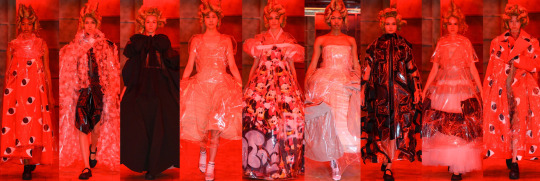
Comme Des Garcons is a fave of the high fashion community and one I look forward to seeing at fashion week but can never quite get behind. I appreciate the what-the-fuckery of it all with this show totally being able to pass as a run-through of some kind of nuclear waste themed scare house at one of Thorpe Park’s fright nights. I assume given that and the plastic Mickey Mouse print it’s supposed to be some kind of reference to the part late-stage capitalism has played in the hellish landscape we find ourselves in today? Or something all intellectual? In which case I made my interpretation with farrrr too much confidence. But Anyway! Who knows! I’ll leave the analysis to the fashion students, and give it one word: trippy.
Onto Dion Lee, a brand I truly do get excited to talk about because it’s rare that I don’t LOVE his work.

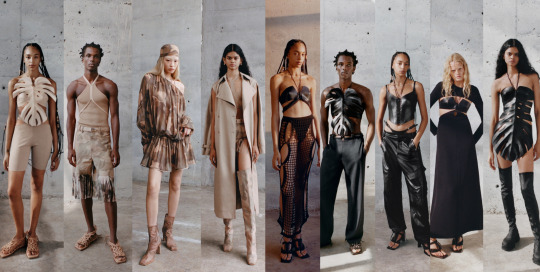
Without fail, Lee manages to be confidently ahead of the curve without going out of his way to announce it and his genius to everyone with flamboyant shows and exaggerated designs and extortionate prices. He is very much an underdog in the fashion world in terms of big names but you’ll be hard pressed to find anyone who doesn’t love his collections. His S/S21 collection is one of my favourites of the bunch. I love seeing something I’ve never seen before and the palm leaf breast plate is so odd but so cool and so perfectly Dion Lee at the same time; we’ve seen jungle/tropical inspired collections sooo many times *cough cough D&G cough cough* and THIS is how you make them fresh and unique. I mean, never in a million years did I think I’d get behind the resurgence of the gladiator sandal trend but Lee has me changing my mind. This is one of the very rare times you will ever see me using this meme to praise a man but:

I mean, he has Fernanda Ly modelling for him, that the man has taste goes without saying.
Now for a bit of a full circle moment, given that I did actually praise Dior’s haute couture collection in my first ever post; Maria Grazia did GOOD. Well, with haute couture at least.



She’s always pretty hamfisted with her references, there’s no denying, with that Grecian Goddess style RTW collection typifying that statement completely, but luckily she struck gold this time round; as someone who studied the Tudors for A-level history, seeing a modern take on the exaggeratedly feminine renaissance silhouettes with the baroque prints and the deep jewell tones got me super excited especially when you throw in the dreamy tarot theming and the nods to the mystical and arcane. Seeing as the Heavenly Bodies Met Gala (I know, I know, I need to move on) was some time ago now and Cersei Lannister’s *SPOILER* been crushed by a rock (could also be seen as a metaphor for the irrelevancy David Benioff and D.B Wise condemned GoT to when they aired that shitty ending tehe) and so probably won’t be getting a collection based on her costumes any time soon, this is the only fashion take on this kind of period dress I’m going to get…and you know what? I’m okay with that. Thanks Maria, I guess?



Her RTW collection wasn’t absolutely awful either, and slightly better than the past few collections at least. Put a monkey in a room with a typewriter (or show it enough similar well-received collections) and it will eventually write something that makes sense, don’t they say? I like the nomadic feel of a lot of the looks and there’s beautiful layering going on but the aura of exotic opulence unsurprisingly didn’t stick around for long and I found that there was a decline in quality in the midsection of the show that landed a lot of the outfits in either awkward mother of the bride at a beach wedding or The Only Way is Essex Ocean Beach PLT sponsored poolside party territory. The looks picked back up a bit towards the end stretch of the show but I wasn’t a fan of the Gucci style oversized glasses which were so out of place with the rest of the theming that if anything they seemed like a cheap grab at relevancy. So yeah, a middling, subpar Etro-esque collection which is better than usual for Dior I suppose.
Next, Elie Saab, whose S/S21 collection was kinda disappointing, tbh. Oh how the turns have tabled given that positive Dior review and my usual love of Saab’s collections.


I know his dresses lose some of their appeal when we can’t see them in motion but even ON the runway I can’t see myself being dazzled by any of these pieces the way I usually am. They’re lacking the level of detail and craftsmanship I associate with the brand seemingly in favour of block colours and suits and the issue is that the whole Disney Princess fantasy has always been the appeal for me because the silhouettes aren’t interesting enough on their own. They’re not ugly pieces, they’re nice, but does nice really have a place in high fashion when the pieces are so basic in both their design and presentation that the shots could pass as ripped from a catalogue? The strongest parts of the collection were when it did go down the more delicate route with the muted blue suits and the white feather trimmed dresses, the small, ornamental gold details reminding me of a very toned down nod to Schiaparelli’s hardware, but with regards to the bright coloured pieces, I can’t lie-they did look like something you could find in the M&S Per Una holiday section. Then you’ve got the weakest parts, which were just flat out ugly: sheer giraffe print, sweat band style elasticated waits, and long chiffon shirts that I hate to admit read as frumpy. There are times where I’ve not been particularly excited by an Elie Saab collection in the past, but I do think this is the first time I’ve actively disliked parts of it.


Conversely, Erdem’s S/S21 collection was super strong, and solidified the brand’s place in my mind as a dependable source of kooky maximalism, this time round giving us Anya Taylor Joy’s Emma wardrobe on speed. You could tell me Erdem Moralıoğlu had just raided the Bridgerton set’s fitting rooms and put it on a runway and I would 100% believe you and I mean that in a positive way because to give my unpopular opinion, the clothes were the only good thing about that show. The endearingly florid details of exaggerated bows and clashing florals were still there but this time in a way that felt more subtle and self-assured, as if the calming influence of the wooded set’d had a direct hand in the designs, giving the rugged, ethereal feel to the collection I associate with brands like Brock and Simone Rocha, all whilst keeping the parts of Erdem I’m so fond of.
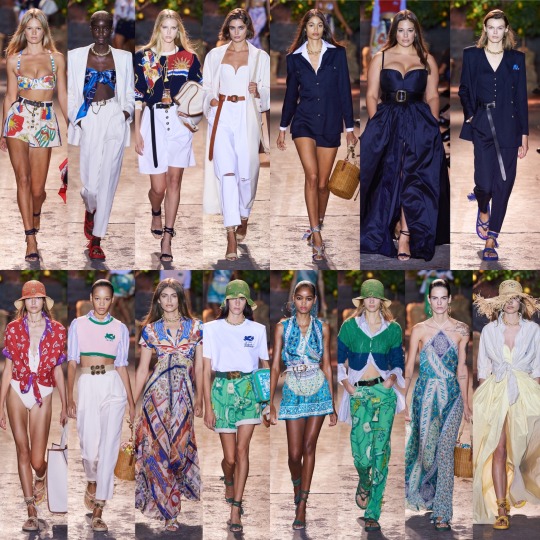


Is it really much of a shock that I included pretty much every look from the Etro S/S21 show? Like, you know that Christian idea of God, like, (the voice in my head is very much taking on the dumb valley girl voice that anybody who reads this is most probably getting too) knowing our souls? I think Veronica Etro knows mine. So no, no surprise. Though there were a few unconventional touches thrown into these looks (the campier prints and nautical theming we see with the 80s beach towel print, for example, reminded me a bit of Versace) the mystical bohemian it girl that Etro designs for would still be highly satisfied. Sure, it might be a wardrobe fit for a holiday less adventurous than backpacking but if she wanted a tropical poolside holiday, this collection is the one, the paisley print chiffon mini and maxi dresses especially. I’m just gonna pretend I don’t see the monstrosity that is leggings worn as trousers-it’s a fashion rule I refuse to abandon-because they are the only stain on an otherwise expectedly gorgeous collection.
Next, an unusually reserved RTW collection from Fendi:
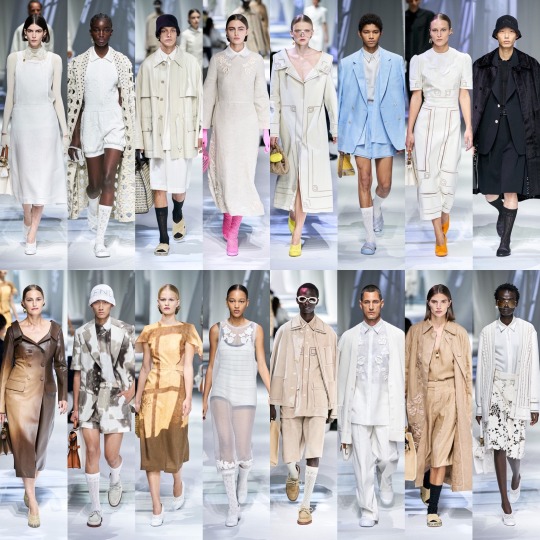

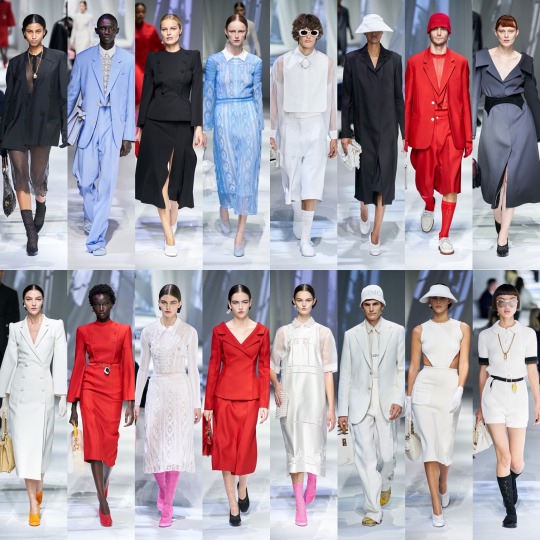
More in line with the wardrobe of a European fashion editor than the glamorous trophy wife (who let’s say uses that facade as a guise to ruthlessly run her husband’s whole business empire from behind the scenes because in this house we do complex female characters only), these pieces are lot “smarter” and more professional looking than Fendi’s typical offerings; where I feel Fendi usually designs for the society girl who wouldn’t mind a front page scandal, these are the kind of outfits a young member of Monaco’s royal family would wear for a positively received but business-as-usual press tour. I know, Fendi is an Italian brand, but this is more Southern France to me. We’re talking some 2nd page shots of a Kate Middleton type on a yacht on the Riviera smiling and waving as her PR team’s ideal scenario. Still, whilst fewer exaggerated silhouettes, animal prints and overtly luxurious fabrics (real leathers, silks and furs for example) mean that the drama’s a little toned down, it’s all still very expensive looking and combines the classically feminine glamour of the past and the minimalism of modernity in the artful manner that we’re used to. Maybe it’s me being a basic bitch but I always love seeing Ashley Graham on the runway too, even if brands to tend to use her as their single token plus size model.

Kim Jones’ debut haute couture collection for Fendi, however, wasn’t a very well received one. I don’t hate it personally but I can see where the criticisms are coming from. Whilst it’s closer to the version of Fendi I’ve come to expect and there were some stunning pieces which completely encapsulated that distinctive aura of luxe and glamour, there were quite a few lazy pieces which could’ve been from any designer. I also felt the collection was a bit upstaged by what seemed to be a who’s who of the modelling world; having Bella, Cara, Kate and Naomi ALL walk in one show was a bit distracting and took the focus off the clothes completely.

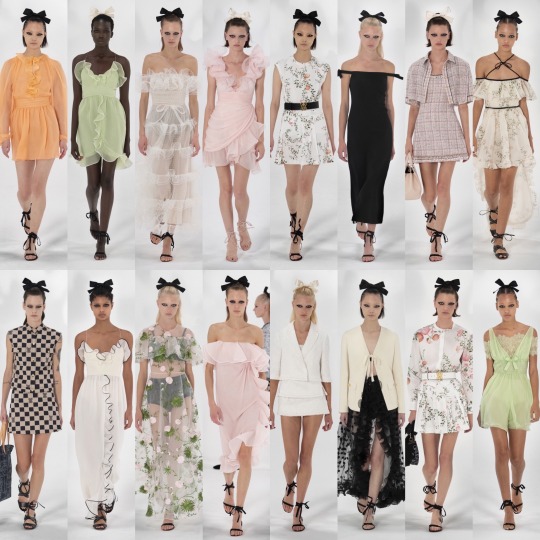

Giambattista Valli’s RTW collection was gorgeous as ever; the man has undeniably mastered the art of delivering classic, objective elegance, the kind of designs I feel would make you light on your feet and smell like strawberries and cream the minute you put one on. Whilst as a brand his RTW shows are rarely trendsetting, they reliably produce a plethora of unfailingly graceful and demure pieces, as appealing to your mum and your grandma as they are to young women and little girls, and this collection is another victory lap for Valli when it comes to upholding his signature tea party and artisan cupcake making and rose garden strolling and bottomless rosé brunch appropriate aesthetic. There were a lot of outfits that were bordering on overly juvenile, with structures a little too basic to justify the amount of sequins thrown on, but when it’s good, it’s so sweet that regardless of how to formula it is, I can’t help but fall in love.


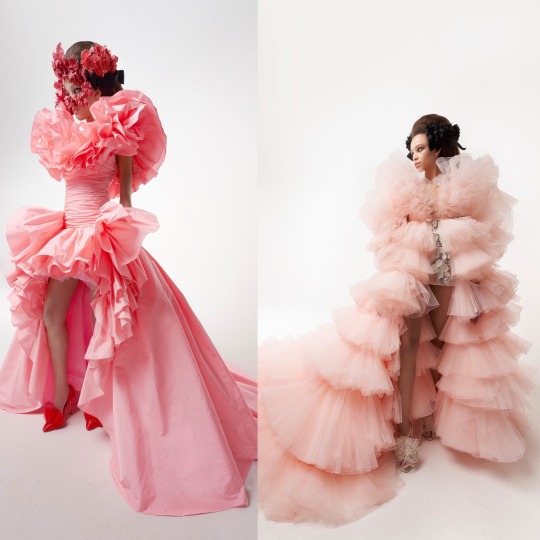

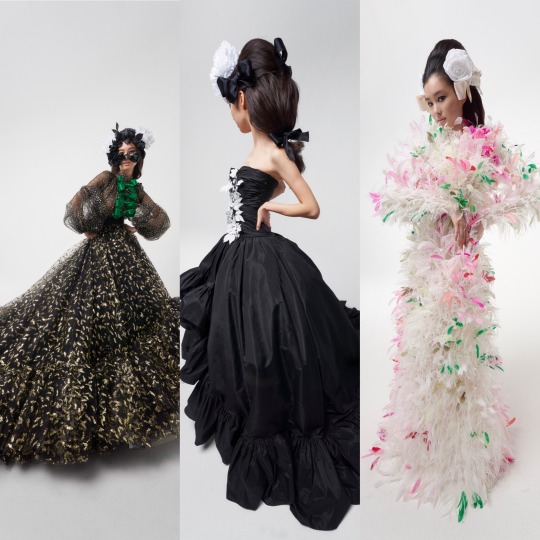

Valli’s haute couture collection was stunning too and for sure a more exciting offering than the RTW. There was of course a lot of the signature tulle but it was head-turning, over the top in a way that leant far more towards the experimental than I expected. The photos themselves are 100% believable as a some kind of Vogue behind the scenes editorial shoot on the set of live action Disney princess movie (in between takes of the climactic ball scene if you wanna get specific with the vision); if you are looking for a prettier alternative to the primary colours and disruptive shapes of a Molly Goddard collection, this is the one. It’s giving the themes of excess and abundance I associate with that of the Hunger Games Capitol but through the softer lens of a Sofia Coppola movie, and being the typical cinema loving white girl I am, I’m obviously on board with that vibe.



I did SUCH a 180 on Givency’s S/S21 collection from when I first saw it to writing a review. My initial reaction was one of disappointment, I guess simply because Givenchy has given us so many bold pieces and presentations over the last few years whereas this is more low-key. After properly considering it though as I would any other brand, I came to the conclusion that I do actually really like it. It’s still got the strange, androgynous silhouettes popping up throughout and the futuristic space-age details but with a more down-to-earth, streetwear feel, albeit a very slick, glossy spin on the trends of the rabble (that’s us guys) of course before we go believing it’s achievable. On the one hand, the devil horn accents are a touch Claire’s accessories halloween range but at the same time, done with confidence they’re kind of cool and bring something new and fun to the table in line with the dark theatre of Givenchy’s last few shows.
Now for Gucci, which for the first time I have to say, if I'm attempting objectivity, is not a standout.


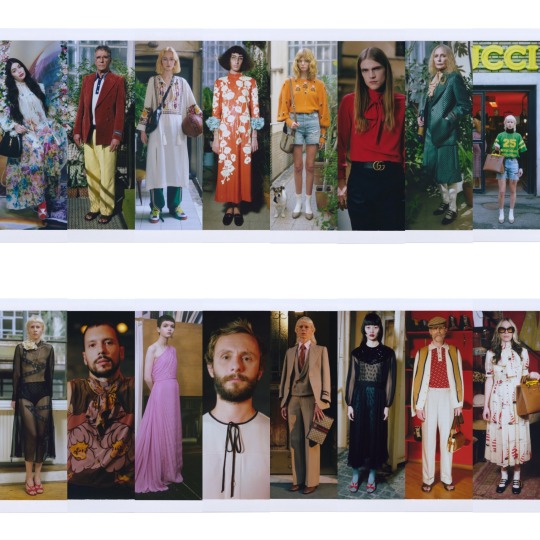
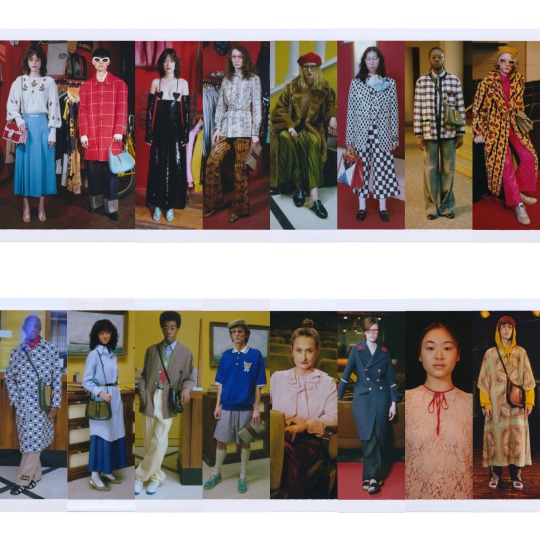
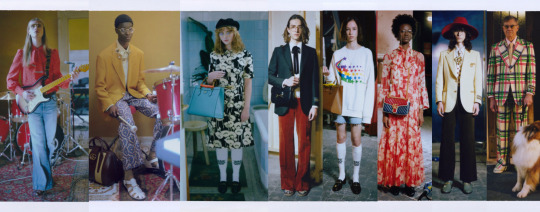
Like, can I just start by saying though the format it’s presented in is cute, it’s not ideal as a way of actually showing the collection. I get that the vintage shop bin vibe is a huge part of Gucci’s brand but polaroids make it SO hard to actually see the clothes, and that’s what we’re here for right? I don’t want to give the impression that I don’t like what I see here-the clothes are gorgeous, an idyllic ode to the off-duty wardrobes of Studio 54-ers, bohemian style icons like Charlotte Rampling and young Olivia Newton-John, psychedelic rock guitarists and the inhabitants of San Fransisco’s Haight during the late 60s and early 70s, Alessandro Michele’s favourite period of reference. I can’t pretend otherwise, or act like I wouldn’t want to wear the shit out of this collection. Buut, for Gucci? It’s a little underwhelming. These are the kind of filler looks we get in a typical Gucci show to go alongside the more statement pieces, which this collection is lacking. It’s just that these are designs which usually gets people talking and these pieces don’t do that. It sucks because for most other brands this would be a stand out collection, an immersive, luscious vignette of what people tend to think of as a cultural golden era, but when you’ve had a show that involved models carrying replicas of their own decapitated heads down the runway in the last 5 years, of course something more toned down like this is gonna generate a lot of “is that it?”s.

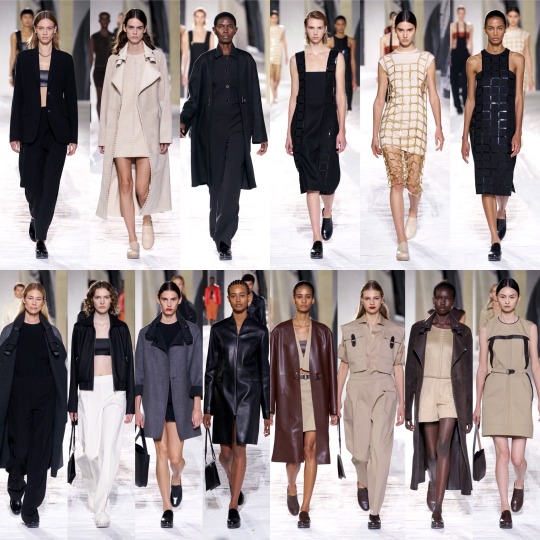
I owe Hermes an apology. Looking back, I have disliked all their previous collections for the same reason that I now really like this one; maybe it’s in part down to the frustration of still having to whack out the winter coat on occasion in May (fuck British weather and climate change), but suddenly I really appreciate the value of some good quality, versatile outerwear. Hermes is giving us that in spades here and for that, I bow down to them. The pieces on offer are clearly well-made and genuinely practical, and through the minimalist approach manage to retain both an air of timeless sophistication whilst also being youthful and on trend. The leather tactical vest co-ord I can easily see edged up and taking centre stage on one of those insane Seoul street style slow-mo TikToks that were big a couple of months ago and there are several pieces that could tie together a grunge influenced k-style look just as well as they could exist for years on end as the wardrobe staple of a high-powered businesswoman. Designer Nadège Vanhee-Cybulski’s strengths really come through with the simpler looks and it’s the patterned pieces that drag down an otherwise flawless collection; I guess because the aesthetic is very minimalist, the patterns can’t be anything overly decorative but unfortunately this has a bit of a dowdy effect when you pair it with such modest silhouettes. Disregarding those elements of the collection though, it was super good.


It goes without saying that Iris Van Herpen’s haute couture collection was breathtaking; if the fashion community can agree on anything, it’s that this woman’s work is consistently awe-inspiring. She captures the wonder of the universe, the biological structures and kaleidoscopic colours we don’t even register, through fashion in a way that others can only imitate, to mesmerising, truly transcendent effect; I can only assume Van Herpen has mother nature whispering into her ear because how the hell else do you explain her ability to take the kind of microscopic organisms they show you images of in an outdated GCSE science powerpoint and make a dress that resembles one so stunning? Care to explain, Iris? Because if there is some kind of line of communication between the two of you can you please tell the bitch I’m over this weather and that I have cute summer outfits I’m waiting to wear so can she pack this torrential rain shit in? K, thanks xoxo


See it seems shady as fuck to go from IVH to Isabel Marant like this because we are talking 2 designers with totallyyyy different approaches to fashion; Iris Van Herpen is haute couture for starters whereas Marant is commercial, and that’s her thing, but unfair comparisons aside this collection is still a bit of a let down. This is considering I do usually really like Isabel Marant collections based on whether or not I’d wear the pieces, which seems a more appropriate barometer to use to come to a quality verdict. Whilst there were a few of the elegant bohemian pieces my mind goes to when it comes to her brand, the steps outside of that comfort zone didn’t pay off; graffiti print (can be cool if done with some subtlety which apart from a few exceptions was not the case here), cheap looking reflective fabric, and MC Hammer style dungarees, it seems to be an attempt to merge 80s trends with modern urban culture, and an attempt that at times verged on the disastrous. It’s good for a brand to experiment, of course, and appeal to a wider client base than usual, but when it’s bad the unfortunate take away is that the design team don’t have the chops to pull off straying from familiar territory; designers wouldn’t be showing at fashion week if this was truly the case because disregarding the influence of nepotism, fashion is an area you need real talent, perseverance and business smarts to excel in, and so it doesn’t do a team justice when they do fail.



J.W Anderson, on the other hand, really put his best foot forward this season and presented this work in a really cool way too which only added to the positives; whilst the way the shots were edited was funky af, it didn’t detract from the actual outfits, and if we are to see the same limitations when it comes to the F/W collections being released, this is something a lot of designers and editing teams should take note of. The idiosyncratic exaggerated shapes that we see as a recurring feature of Anderon’s collections were still on show but this time round with added femininity, billowing skirts and trailing jewellery that channel the stage looks of Stevie Nicks in a way that’s modern and functional and maybe even fit for the office if you were to work in a more creative industry with a chill boss. Could also work for a coven of witches who practice meditation by bonfires in the moonlight and burn the letters of men who wronged them in some Arizonian desert, so like I said, functional! Who doesn’t like versatility? The only thing I’m not too keen on is the shoes but they’re not so bad that it affects my opinion of the collection and they look comfy I guess.
Lastly, we’ve got to talk about Jacquemus, one of the most influential names in fashion at the moment. And yes, this time round, I’m doing it: I’m buying into the hype.

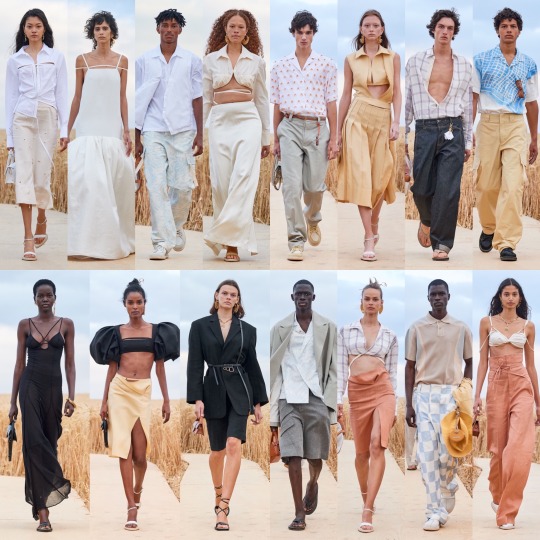
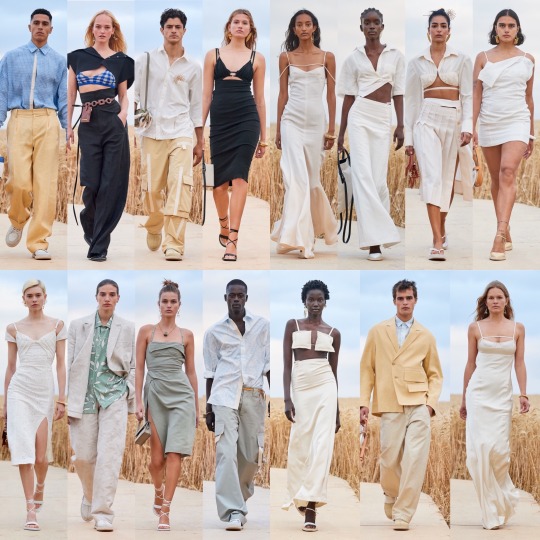

This collection is gorgeousss! I can see already that a lot of the recurring elements of the show are going to be big summer trends for this year (the cut outs and strappy details on the blouses are everywhere already) even though it isn’t hot enough to have collectively decided the time to start dressing for heat is upon us yet, and that’s always a good indicator of how successful the designer was in their vision and attempts to assess the needs and wants of fashion enthusiasts; whether I’m as big a fan of his work as everyone else seems to be, there’s no denying Simon Porte Jacquemus has always excelled at this practice if the buzz around him is anything to go by. It makes sense given the last year of us all being stuck in and suppressed that a lot of us are already romanticising the summer ahead, anticipating picnics and beach days and general Theresa May running through wheat fields type shenanigans galore, in spite of how dubious an assumption it is to make that British weather will allow for this; Porte Jacquemus has very much catered to this wishful thinking and the popularity of the whole escapist “cottage core” aesthetic, sexing it up a little bit with pieces that hug the body in ways only Mugler knows how whilst being lightweight and relaxed enough to look good with windswept, sandy hair and a little dose of sunburn. I’m talking enough to give you some cutesy freckles and rosy cheeks not PSA on the importance of suncream territory, guys, what is it with those of us on the gen Z/millennial cusp not taking sun damage seriously!? Why do I have to beg so many of my friends to wear it!? Does nobody else remember those photos they’d show you in PSHE in English primary schools of burnt people’s skin under UV lights? Or is that just me being weird and only having such a vivid memory of the images because teachers told us we had to wait until year 6 to see them due they to their “graphic” nature only for my gore-loving self to be extremely underwhelmed when we finally did get that lesson? They showed us a woman giving birth in year 4 for fuck’s sake. THAT was traumatising.
Back to the actual point anyway, with just a couple of negatives, the first of which being that the pieces are very similar to those feminine looks we saw dotted about the Jacquemus menswear collection from last year that were all over fashion Twitter. In Simon Porte Jacquemus’ defence though, it makes sense that those tones and silhouettes would be revisited in a full womenswear collection for that very reason; considering they went down so well and that lockdown gave us a bit of a half-baked summer in 2020, expanding on those elements enough for a whole new collection makes good business sense. We did get some cool additions too, mainly in the form of accessories, with the hardware details on the belts similar to those included in the Givenchy collection and the abstract hair slides being standouts for me. It was all exquisite-the shoes, the jewellery, the styling, everything 10/10. My other nitpick, and I say nitpick not because it’s not important but because it’s an issue that’s hardly restricted to Jacquemus (this casting team are far from the worst offenders, Saint Laurent I’m looking at you), is that I WISH we’d see more diversity with the models. Despite what my body dysmorphia yells at me, I am small, and yet seeing all those fucking minuscule waists made me die a little inside; it’s crazy to me that in 2020 the lack of variety in body types on the runway is still such a problem.
I must have said this a million times but I don’t want to end on a negative note so let me reiterate: this collection was STUN. NING. Plus there were some others I’ve talked about in this post that I’m sure will make it into my top 20 in the final part, Jacquemus, Dion Lee and Etro for sure; we even got some gorgeous pieces from Maria Grazia which I thought was a sentence I’d never type out. Have I said enough to not leave a bad taste in the mouth of anyone who read to the end of this post? I hope so, lol! TBH, it’s impressive given everything that’s going on that the majority of designers did roll out collections in September as usual so serious respect to them and their design teams for that.
In the next post, I’ll fingers crossed be able to include everything from Kim Shui (exciting!) through to at least Off-White (actually pretty good this time?!) and make this whole thing a 4 parter before getting straight on top of the photo posts I’m thinking about doing for the time being for the F/W21 shows. So as usual, if you did read to the end thank you so much and I respect the perseverance you must have to get through all my rambling, lmao. Hope everyone is well and coping okay and again, my inbox is always open for any post suggestions, constructive criticism, or just a chat for anyone who needs a listening ear.
Big love and thank you again!
Lauren x
#fashion#fashion post#trends#fashion trends#summer#summer fashion#ss21#designer#high fashion#accessories#haute couture#couture#fashion week#personal style#review#nyfw#style#style inspo#runway#details#super models#supermodel#dion lee#fendi#gucci#erdem#jacquemus#simon porte jacquemus#uxury#luxury fashion
8 notes
·
View notes
Text
The Dresden Files - an overall review
(There are very very minor spoilers, but I mostly wanted to write something non-spoilery about the series as a whole.)
-
The Dresden Files. I knew a few things about this series before I went into reading it in part because I had watched Daniel Greene’s YouTube video about why people should read it and I won’t lie and say that I didn’t go on Goodreads, look at how long the series is and then question if I actually wanted to read it and wanted to spend months and months going through the books. But, I had nothing else that was pressing on my TBR list and my library had Storm Front on ebook available. So, I gave it a chance. I am so glad I did. I think I finished that first book in two days and I rolled right into reading Fool Moon pretty much as soon as I finished Storm Front.
I didn’t expect to like it as much as I ended up liking it. I didn’t expect to read the series as quickly as I did. But here we are. The thing about Dresden Files is that it’s the type of story that starts off small and then evolves into something much bigger. After all, the first few books can almost be read as standalones because while there is consistency of character, largely the events of each really remain within the scopes of each book aside from a few minor details. This is why at first glance Dresden to me seemed like a procedural leaning towards a pulp-fiction style of storytelling which I was okay with even though from the aforementioned YouTube video, I was aware that that would change as the series went on.
Back when I was a kid, one of my favorite shows was Buffy the Vampire Slayer. And Dresden has been one of the few things that reminds me of BTVS, although I’d wager that Dresden more closely resembles the BTVS spin-off Angel more. I think it’s this resemblance that made me eager to keep reading. That and knowing that the books weren’t as simple as first presented.
The things I love about it:
I love how simple and yet complicated it is all at once. It’s simple because the concept can be summed up in two words: wizard detective. You really don’t need a whole lot more to describe it. And yet as the books go on the world is expanded and suddenly things are more connected than you once thought and there are different levels of power at play as well as factions and magical creatures and politics in the middle of all of it. This just makes the world so much richer and interesting and fantastical while still keeping the roots of the human world.
I love the characters. There is no character in this series that isn’t complex and flawed. They are very very human even when they’re not actually human and it is very easy to relate to one or more of them. Not every character is likable, but many — even the villains — are. And to go off of that, it is the relationships between the characters and the growth of that over the course of the books that makes this series worth reading.
The mythology that is weaved into the story is great too. There is so much that comes right out of myth and adapted to fit into the world of Dresden and I am just in awe of how well Butcher manages to fit all the different things into one world from characters to artifacts and story and then also weave it into his own additions and his own changes to fit with his story. I’m aware that Fool Moon has a lot of criticism, but one cannot ignore the work that went into depicting all the different werewolf myths in one book. Then you also have the three courts of Vampires, the Sidhe, and characters like Odin, as well as archangels, and so much more.
The writing is also good. I think one of the best parts about it is that Butcher has gotten better and better with every book. His descriptions are vivid and he does so well when it comes to magical battles and action. And it’s very easy to read and get just sucked into the world in part because the books are written in first person POV.
As far as representation goes, it isn’t amazing, but there is some and specifically, there are a lot of women in positions of power which is always enjoyable to read.
All of this does not mean the books aren’t without their flaws. No one thing can be perfect (except Black Sails…), there is always some problematic aspect to a work or something that doesn’t appeal to everyone. Some might say that Dresden Files has a lot of problematic things going on.
The number one glaring thing is the way that Harry talks about women. It’s not that he doesn’t respect women or think that women can be strong and capable — I mean, he literally has Murphy there to remind him — it’s that the male gaze is so very very prevalent throughout the entire series. It’s like Butcher and Harry through him, cannot help but notice how beautiful or sensual or sexy any woman that crosses his path is. It’s understandable because we are reading the first person POV of an adult man, and even more so when we realize that sex is a big part of the supernatural world. I mean, we literally have vampires that are essentially succubi and get their “food” from sexual energy rather than drinking blood. The Sidhe all seem to be attractive and in multiple instances we see these fairies use their bodies and sensuality and like weapons to entice and seduce and overpower Harry and others.
And yet, there is a clear choice that Butcher has made here to have Harry notice every woman and describe them nipples first and then describe them again on a next encounter in the same way. Even Murphy who does get described by her stubbornness and her strength and her accomplishments and her prowess also has the attached description of how short and how cute she is and Harry does also sexualize her in his head. Susan gets similar treatment and in the first book we even get to see her throwing herself at Harry due to the imbibing of a mis-intended potion.
So, yes, this is very much the male fantasy/male gaze in action. Harry has women — mostly supernatural women — throwing themselves at him and in-book context there are reasons for this, but we’re supposed to praise Harry for how much his male libido is telling him “yes” and how he manages to somehow rise above that and not take the temptation — there’s even a scene where he literally pours ice water down his pants. And to be honest, I see the problems, but I also think it fits his character and Butcher describes the series as “Dirty Harry Potter” so what can you do.
The moment that it became truly a big problem for me was when Molly came into the picture. The first time that Harry has a scene with Molly she’s fourteen and I can’t quite remember the exact words used but I’m sure that he manages to notice her body.
Molly doesn’t return for a few more books, but when she does she’s seventeen and Harry definitely notices Molly then and while it is one thing to take notice once, he constantly goes back to noticing Molly throughout the book. Molly’s feelings during all of this is one thing in part because Molly is young and impressionable and I think most young women have crushes on older men they admire and look up to, but to continually make a point of having Harry notice Molly and be attracted to Molly is icky. It doesn’t even matter that Harry doesn’t intend to act on it and that he actively puts a stop to it when Molly tries to turn things in that direction, mostly because in books following this one Harry still always takes a moment to appreciate Molly’s appearance and not just him but other male characters.
So, yes, the sexulization aspect of the books is not the best, but I did appreciate that at least earlier on Harry is a bit demure when he is with women. His sexual acts are not described in detail. I was a bit surprised, then, when we did get slightly more graphic descriptions when it came to Harry and Murphy. It’s nothing like what you’ll find in fanfic, but it was a surprise.
And the thing that also gets me about this is how easily Harry being this way could be explained because of his past and because of how Harry relates to sex, but instead Butcher explains it by saying that Harry is repressed because he isn’t getting any so that’s why he notices every woman that comes into his life.
I will also point out that there aren’t just women supernatural beings, and that aside from Thomas who is described as the perfect man — strong and attractive and young, a lot of the male characters are a bit rougher and older and monstrous.
Now, I’m not the best person to speak on this, but religion is a bit strange in Dresden. Mostly because while we have characters like Odin and Hades show up we also have fallen angels and archangels and characters that believe in God and have faith. But we have Christian artifacts in play so I do feel like there is a bias towards Christianity.
Overall, I did enjoy these books. I think it’s a really good immersive story and that the world is interesting and ever expanding and that as a fantasy series — in particular an urban fantasy series — it is one of the best out there and I can’t wait to see where the rest of the series takes us. So I do recommend it with the caveat that it isn’t perfect and that some books are better than others but that as a whole it is an enjoyable read.
--
Other Meta/Reviews
33 notes
·
View notes
Note
Hello Rosy! This might be a difficult ask. Don’t know if you’ve already seen what’s going on on Twitter, but a white reviewer said she couldn’t understand a book because she started reading the sequel without reading the first book. It was a paid review, for a famous magazine. The book was written by a POC, and it was so enraging that suddenly a lot of reviews, written by her, with blatant racism started showing up. She’s said some pretty bad things, such as a white reader not understanding a different culture because it’s too exotic and was presented in a “non-white way”. She also said she clearly wasn’t the best reviewer for that book as she wasn’t of the author’s ethnicity. I think that’s super ignorant, because why can’t a white person try to understand a different culture? Anyway, this got me thinking. I love fantasy, and love it even more when it grabs elements and cultures of our own world. I love learning about different cultures than my own and just get to know them. I’m from a smaller country where most people are honestly ignorant about racism. I tend to believe I can easily put myself in other people’s shoes, and I never understood this white-privilege and need for everything to be about white-culture. I think it’s very dumb when we claim things need to be changed because we don’t understand them because we are white, and so POC should change their stories so we can “relate”. Reminds me of colonialism, tbh. I mean, the world is so beautiful and so diverse? Why do we feel the need to even dictate fantasy stories that way? What I wanted to ask is, as a white person, when does it become racist when trying to get to know another culture? Until a few years ago, I didn’t know the word “exotic” was bad, for example. Is too much enthusiasm bad? As an aspiring writer who’s white cis, when does it become disrespectful to write diverse characters and try to represent their culture in a respectful, truthful way? Thank you, and I’m sorry this is so long. (Didn’t proofread, hope it’s coherent!)
This is a difficult ask. Because it’s complicated and we are all right smack dab in the middle of this cultural upheaval. It’s had to get a clear perspective on it, because we’re drowning in it. I suppose I’ll answer it, not as if I have all the answers, but as if it’s a problem that I am sorting through and sometimes struggling with myself. I have been working on this answer for three five days now so let’s see if I can wrap it up.
I did see the issue going around on twitter but I didn’t read the book and didn’t click on the review, because, well, sometimes I get tired of giving my attention to people who are acting in bad faith about issues of race and diversity. I saw a quote yesterday about the truth of a lot of people acting in bad faith. They can PRETEND they are innocent and ignorant and don’t know what they are doing, but a professional reviewer doesn’t bother reading the first book because it isn’t worth their time and then judges the book based on their ignorance? That’s WILLFUL ignorance. That’s disrespect. Saying they couldn’t understand it because it’s not from a white perspective is both minimizing the humanity of the non white culture, the AOC, and the book, and also putting the white pov, the white audience and the white author ABOVE everyone who is not white.
“I can’t relate to this book because I am not centered and it is not about people who look like me and are white.”
This is part of the “white default” mentality. This mentality says that the REAL human is a middle/upperclass, christian, cishet, abled, western white man, and everyone else is some sort of hyphenated person. The more hyphens, the less they count as human. A book about a hero, is about a white man. A book about a female hero-- or heroine, is a white woman. A Black hero, a Black man. A lesbian Black female hero. A poor, muslim, bisexual, Filipino, single mom... is apparently the kind of person that those at the “top” of the identity food chain can’t conceptualize as having universal human experiences.
Because they are “the other.”
Saying that white people can’t relate to BIPOC in the content they consume is saying that white people and BIPOC do not share the same human experience.
That’s one of the reasons why calling someone ‘exotic’ is problematic. Because it’s othering that person, saying they are odd or weird or unusual, not even in a bad way really, but in a way that makes them NOT a regular human. Perhaps something good enough for an exotic vacation or love affair or a night out at an exotic restaurant. It turns people into consumable goods that aren’t a part of the default human’s REAL world. Exotic is spicy and attractive and sexy and foreign. Something to be explored and then discarded when you go back to your real life.
So yes it TOTALLY is akin to colonialism. And that reviewer, using their entitlement as the basis for their review shows a marked incompetence as a reviewer. That is a BAD reviewer who acted in bad faith to attack authors and stories that were different from their dominant experience.
Okay. So that’s the discussion about the reviewer and the BIPOC authors. Listen, the publishing industry is a MESS, and it has been for years. Publishers, editors, reviewers, marketing, book covers, agents, writing associations and, the worst one for the readers, the writers, too. Yes. It’s awful, every time you turn around you find out something horrible about a favorite creator.
I think it’s because when we create, we use who we are, underneath our polite public personas, to create new worlds and characters. And that’s the part of us that is full of biases and unquestioned prejudices, wounds, resentments, fears and weaknesses. Those things come out in our stories. No matter who we are they do. But also when a person gets power and success, our cutlure allows them to abuse that power, and then we start hearing stories about what our favorite creators do with that power-- and we start to connect that abusive or toxic or racist or transphobic behavior back to the stories, books, movies and shows that they’ve created and then, voila. It’s all painted in black and white on the page or screen or whatever.
I think it’s just part of the vulnerability of being an artist. You put yourself out there to be seen, and that means a lot of your ugliness is visible. We all have ugliness. We’re all raised in a racist world. Not just those who are white and powerful, but also BIPOC who have all that internalized racism or racism against other minorities, or classism or homophobia or whatever. All that stuff is in there.
How do we keep racism and other biases out of our work? We probably can’t get rid of it all, because humans are imperfect. And also, sometimes you want to write ABOUT that imperfection. Flaws are part of what make fictional characters interesting. And sometimes we want to address that. Sometimes we WANT to tell a story without explicitly saying, “this bad and shouldn’t be that way.” There is a reason to write about the bad, hard and unfair things in life, and they shouldn’t necessarily be erased from our fiction.
BUT.
As a writer, at this point in time, you really don’t want to be at the mercy of your unquestioned biases, blindspots, ignorance, bigotry, racism, homophobia, misogyny etc.
We, as authors, want to be aware of how these things affect our writing and stories. So I guess the first step is to be pay attention when we hear about how racism etc is shown in the world and fiction. If you can see the problem of colonialism and exoticism in reviewers or authors, if you can see how taking, say, Chinese culture as a basis for your SF world, but not having any Chinese characters or actors in your show (Serenity/Firefly) is racist, colonialist, unfair, and tbh flawed storytelling, then you have to pay attention when you yourself want to use multicultural elements in your story.
I think one thing you have to look out for as a white author writing about other cultures is a kind of cultural tourism, where you look at other cultures and try to *use* the exotic elements to spice up your story. To indicate “the other.” Or perhaps something that is exotic and consumable. Even stereotypes that seem positive to you, powerful and beautiful and exotic can be dehumanizing. Like the “magical negro,” or the “spicy latina,” or the “tech genius east asian.” Why? Because they’re caricatures, not real people. I have also heard that sometimes using religions in your work is considered offensive because they are closed religions. You have to be a part of them to understand them. I am not sure about this, because I am not from a closed religion. I’m from a buddhist tradition that was missionary in nature. (I however hate proselytizing and it’s one of the reasons I left that religion.)
Being a mixed race, multicultural person from a minority religion, who belongs to many cultures and so doesn’t belong to any, I personally think sharing culture, art, stories and influences is a good thing. I couldn’t exist if we didn’t. And I use influences from all over in my work.
When does this enter into appropriation? I think that is a very good question. Using a native american war bonnet to fancy up your bikini so you can get drunk at a music festival definitely seems like appropriation. Writing a well developed, well rounded Lakota character who’s been well researched and stays away harmful stereotypes... maybe not.
I would NOT write a story attempting to Tell The Truth of what it is to BE another culture. Recently a part Puerto Rican, mostly white author wrote a novel attempting to do that with, I believe, the Mexican immigrant experience, American Dirt, and as far as I can tell, failed miserably. Maybe it was a good story, but it was NOT an authentic tale of the Mexican experience. I didn’t read it, but what I read about it felt as if she thought she could write an expressionist tear jerker about her impression of someone else’s experience. As someone who shares a similar background to that author, I would NEVER have had the temerity to write about that particular story. You’re from NYC lady. What do you know of border crossings? But if I HAD incorporated that experience into my stories (not trying to offer some sort of definitive narrative) I would have done more research from primary sources.
Now all authors are writing about other experiences. Other lives. If not, it would all be scarcely concealed autobiographies. We could only ever write about people who looked like us and came from exactly the same backgrounds and had the same experiences as ours and how boring would that be? This topic is SUPER complicated and I keep thinking about more things to address, but if I keep going I’ll never finish this and it will be too long for everyone to read anyway.
Let’s sum up.
Can you, a white person, write about cultures not your own? Yes. With cautions.
be aware of your own biases and racism and assumptions
don’t attempt to write a definitive experience. Don’t write about what it’s like to BE Black unless you are Black. You can’t know. Even Black people don’t have the same experience.
stay away from negative stereotypes and be on the look out for less negative ones that are still dehumanizing.
don’t consume someone else’s culture and disrespect the people.
remember to keep your BIPOC characters well rounded, realistic, and human. They all have pasts and families and fears and hopes and traumas and careers. Don’t treat them as a prop for your white characters. (although do remember that all secondary characters are there to support the MCs, so this can be tricky.)
RESEARCH. Simply basing a character or culture on someone you know is not enough. You should also be aware of history, culture, other depictions, the conversation about that culture, the voices of the people, etc.
Be willing to take criticism. Anyone writing BIPOC characters or cultures is going to get criticism. Period. It’s gonna happen, whether you’re a white author or a BIPOC. Sometimes AOC are more inspected than white authors. All the time, actually, from both white people and POC.
BE RESPECTFUL. Write BIPOC characters as human as white characters who share your culture.
oh I’m sure there’s more. but i’m hitting post now or I’ll never send this.
#writing diversity#multiculturalism#writing advice#rosywrites#you know what theres probably more about specifically sff but I didn't get there#also there's something about a suspicious similarity between racism and some purity discourse about anti-multiculturalism that is basically#just separatism#which makes me very uncomfortable
13 notes
·
View notes
Text
GODHUNTER by AMY SUMIDA | REVIEW
okiee this was recommended to me by @inkleaves ^-^ uhmm so i have a LOT to say about this book. spoilers under cut.
OVERVIEW: “Godhunter” is the epithet given to a young woman named Vervain who uses witchcraft and magic to go around committing deicide in order to save humanity from gods who drain their energy to gain immortality and other godly attributes. However, when Vervain is recruited by the Norse god Thor, she finds herself in an alliance with the people she originally considered her enemies, as they work together to save the world from the maliciousness of the Aztec god, Huitzilopochtli.
RATING: 2/10. i’m giving it a low rating because it doesn’t really have too much to do with mythology, but i did like its general portrayal of most deities even though this book was insanely cringey and dumb.. now, even though under the cut, i’ve kinda bashed the book quite a bit, i still have to admit that i’d be lying if i said i didn’t have fun reading it. i stayed up to 1 AM trying to finish it because i had to find out what the protag’s next stupid decision would be,, all in all, if you like trash/cringe fiction- this is for you.
WARNING: even though this book is a YA novel, I’d say there’s a definite emphasis on the adult part of “young adult”... Certain scenes and themes are inappropriate for minors.
AVAILABLE ON: pdf link here ^-^ ((i think it downloads immediately if you click))
THINGS I LIKED:
the book is cringe.
great diversity in terms of the god cast. i learned about some new deities that i was previously unfamiliar with, so that was cool
Brahma (Hindu deity) wears a Gucci belt as part of his attire ^-^
whatever Estsanatlehi and Tsohanoai (Native American deities) had going on.... they were really cute and wholesome
THOR-HORUS BROTP AGENDA!!!!!!!! everyone who follows me already knows how keen i am about this idea of all the war deities hanging out together (fite club), and this novel served up exactly that. disappointing that Huitzilopochtli wasn’t a part of it, but i am settling for Thor and Horus’ several centuries old friendship.
Horus’ falcon tattoo detail.. i LOVE the idea of the gods having their sacred animals tattooed,, it’s so awesome!!!
Pan... i liked the way he still had his little horns, and he was kinda chaotic and fun.
in general, the descriptions of the gods were so pleasant and so cool.. i really liked the way that pretty much all the gods were beautiful,, this is very much in line with my own idea of how the gods look, and i think it makes sense, because they’re meant to be charismatic, compelling beings- beings that you worship, beings that you praise- why would they be anything but beautiful? and even if they were considered ugly by other gods, that’s only in comparison to other deities.. from a human perspective,, i just can’t see how any mortal could consider a god to be anything less than perfection,, idk
in particular- i really enjoyed the descriptions of Huitzilopochtli in his debut. i know he’s a piece of shit in the novel, but i LOVED the way he was described with his war-frenzy being triggered by blood, and the way, as god of the sun, his body almost glows, and heats up as though you’re looking into the sun itself, and the only way he can cool it down is by bathing in blood... WOWOWOWOW it’s just such a neat and fantastic visual description. his physical appearance really paid tribute to Huitzilopochtli’s original domain and attributes.
i also liked the linking between Huitzilopochtli being the Father of Vampires.. links between Aztec culture and vampirism is a trope that i didn’t originally suspect, but have become exposed to quite a bit as of late,, and i think that it’s quite a clever little plot. i liked that Huitzilopochtli also debunks superstitions about the sun, garlic, crosses, holy water etc.
Huitzilopochtli as the villain. the man makes a BRILLIANT villain- his motives are very clear and also, i thought, justified, albeit unoriginal. his presence is quite terrifying, and the reader does worry for Vervain’s safety whenever she’s with him- which is good! this means that he fills out his role as a villain well. tbh,, i did love Huitzilopochtli from the moment of his debut, but he got knocked out of my books during a certain temple scene and i have some thoughts about that in the next section.
when Vervain wakes up after the temple dream with Huitzilo, and she relaxes because it was just a dream, but then she looks into the mirror and sees bite marks on her neck!!! CHILLS! now THAT was good writing- it was unexpected, and served well to navigate into the next part of the plot.
Odin and Huitzilopochtli holding a ted talk on “how to create panic and discord among the humans”, and the gods having to bring certain meals depending on what the first letter of their names were.
Vervain’s pop-culture references, and her weaponry- especially the gloves that have blades in them that get released when she swings her hand downwards. very cool, i want them.
casual appearances from Vladimir Putin (yes, i said Vladimir Putin)... i couldn’t stop laughing when i read that Huitzilo was trying to kill Putin’s daughter to instigate a war...... asdhshajdhasdjfhjdhf insane
also i know Vervain was trying to mock Huitzilo when she nicknamed him “Blue”,, but like.. that’s a really cute name and it wasn’t even insulting.. yeah, that one backfired on you Vervain... if anything, that just made it seem like she actually had affections for him and i feel like probably in part is the reason why he felt encouraged to pursue her.
THINGS I DIDN’T LIKE/THINGS THAT DIDN’T MAKE SENSE AND/OR CONFUSED ME:
the book is cringe.
it reads like a 15 year old’s fantasy AU where she’s a humble young woman, unextraordinary- yet somehow, she is the muse of every man’s desire. handsome, ripped gods who never wear clothes are laying themselves down at her feet,, and she is just overwhelmed by the choices before her; and all the while, she has to balance a complicated love life with her duty to save the world (since she’s the only one who can).
Vervain as a protagonist. idk how old she’s meant to be, but since the book is in first-person, and the reader is exposed to her innermost thoughts,, i’ve gotta say- she’s incredibly immature. as a protagonist, i just feel like she’s rude, pretentious, snobby.. she has no idea what “respect” even means. in every scene, she’s either fighting someone, or lusting after them (when Teharon told her off for having lascivious thoughts about him, and she simply responded with “well stop being so sexy then” i wanted to die.... WHAT is wrong with her)
i hate the way she looks down on the gods- even if you didn’t worship them, or even believed in their existence, surely you wouldn’t have the gall to lecture Hades and Persephone on how to be a good couple (especially when your advice is shit). surely you wouldn’t have the gall to say to Thor what Vervain says to him on pg 227, 4th line from the bottom, that i will not repeat here. Vervain is just too self-absorbed. i don’t hate her, but i definitely think her character is a bit,,, iffy.
relating to Vervain as the protagonist- everything just seems to happen to her.. and i know that she’s the protag, and things are meant to happen to her, but it all happens to her one after the other in succession, no breaks. it’s so easy for her... oh? Huitzilopochtli is going to kill Putin’s daughter? no worries, Vervain can read Huitzilopochtli’s thoughts! oh? the gods have never been able to transform more than half their body into their animal form? no worries, Vervain is so powerful she can force a god to change against their will! oh? Vervain is being attacked by blood-thirsty wolves? no worries, she saved the life of one werewolf and now he’s indebted to her and will literally kill himself in order to protect her! everything is easy, and nothing is a problem.
the way every male deity ever sees Vervain once and immediately wants to take her to bed. why was that a necessary aspect of her character? and also, why are the gods portrayed as such lustful beings?? it really wasn’t necessary.
Horus throwing a fit about how December 25 is his birthday and that it was stolen from him by Jesus... to quote:
“No big deal?” Horus puffed up. “I was called the Lamb of God. I had twelve apostles, and my myths spoke of my crucifixion and consequent resurrection in three days. His stories were my stories first!”
it’s fine that Horus is angry about his birthday which was i think, historically celebrated around this date- but the rest of it isn’t even true???? Horus didn’t have 12 apostles, i’m pretty sure he was also not called “Lamb of God”, and he wasn’t crucified!!! aghhhh even Thor says “It’s been so long that even you don’t remember things accurately.”
anyways.. my beef with this is the way it’s phrased so as to imply that “oh christianity just stole everything from the pagans” when this is so incredibly false and sounds like something an ill-informed person would say. you can read more about christianity, paganism and christmas here
kinda related to the previous point- the jokes about Jesus’ skin colour. i quote:
“... when Christ first became a god, he looked Jewish because those were the people he chose to align himself with. However, the Jews didn’t want him, and when Christianity spread, the white people wanted Jesus to look more like them. With the change in belief, Christ’s appearance changed. ... We used to tease him about how he looked whiter every time we saw him... Kind of like Michael Jackson...”
what the FUCK??????? seems like Sumida doesn’t understand that various ethnic groups illustrate Jesus as appearing as the local people do. Yes, obviously in a Western country, Jesus is going to look European, he’s going to look white. If you go to Japan, you will see Jesus and the rest of the gang looking pretty fucking Japanese. the point of this is NOT to erase Jesus’ Jewish ethnicity, and it is certainly not because of something like “the Jews didn’t want him”- it is because it is a way for followers to better relate to the Divine. including Christ in this story isn’t the problem- i’ve seen others do it very well. the problem is how uneducated her writing comes across.
all the gods have human jobs so that they can earn money and stuff,, which is fine- Thor, for example, owns a line of boats, which makes sense. but Pan? his job is making p*rn. now even though it’s true that everyone associates Pan with sexuality and stuff,,, this isn’t his primary role, and making Pan out to be just a playboy who has his mind in the gutter 24/7 i think is a bit of a mockery. Pan is, first and foremost, a god of the Wild. why Sumida elected to make him a p*rn manufacturer and not a wildlife conservationist is beyond me... i’m not even pagan, and i thought this creative decision was distasteful and stupid, especially because his character is actually quite light-hearted and cool.
the temple scene with Huitzilopochtli and Vervain. as i said previously, i really really liked Huitzilo’s character. he made an excellent villain. but this part?? i understand why it was done, but i HATED that it had to happen... not just because it was horrible for Vervain, but Huitzilo seemed so powerful and godly right up to that point- after which he seemed pretty pathetic- going back after Vervain after she’s rejected him countless times. she is JUST a mortal!!! c’mon Huitzilo, give it up!!! you are degrading yourself at the expense of achieving one mortal’s “love”.. the fact that he had to hypnotise her to get what he wanted AND had to achieve it through her dreams (when’s she can’t protect herself) was sooooo pathetic and disgraceful.. IMO, he committed the worst sin any person could ever commit and i just... AGHHHHHHHHH SMH WHY?!
speaking of morons- Thor. Thor just comes across to me as extremely possessive, and over-protective,, and idk how Vervain was NOT creeped out by the fact that Thor had literally been stalking her for two years before she even met him. wtf? god or not- that’s creepy. actually, i think it’s creepier because he is a god.
Sif. i am still waiting for good media representation of thunder god Thor and his beautiful golden-haired wife Sif- i want them to be HAPPY, and i want them to be in love the way they should be!
Persephone. i like the idea of Persephone being sweet-tempered, and kind- but in this book, she’s such a wimp??????? she totally just lets Vervain be rude to her, a goddess who’s name means “Bringer of Destruction”. also- her relationship with Hades seems toxic.. i mean,, he like tracks her? she starts stuttering when she talks to him, and gets nervous when people so much as mention his name. not to mention the fact that Persephone says that when she does go back to him, all he demands from her is a certain horizontal dance so much so that she is “sore” (<- quoting from the book here) every time she returns??????? WHAT IS HAPPENING?????????? and no one even questions it. Vervain doesn’t even question it! instead she suggests that Persephone MOVES IN with Hades permanently???? and that Hades should just start verbally saying how much he loves Persephone instead of “showing” her how much he “loves” her.....??? there are SO many issues with this.. i can’t even- *screams*
the Aphrodite-is-madly-in-love-with-Huitzilopochtli side plot. it could have been really good, but then it ends so abruptly,,, i mean.. why’d Aphrodite get done so dirty like that? Also summary of Hephaestus’ first and final scenes:
Hephaestus, entering the room: Right, what’s all this then?
Vervain: Your wife is cheating on you (again)
Hephaestus: Aight, i’m out *leaves and never comes back for the rest of the book*
what the HECK was the ending with Trevor?? i hate Vervain so much i can’t... okay first of all- WHY did Trevor decide to have a wolf-marriage with Vervain?? he kept on going on about how she’s so beautiful, and kind, and caring... NO SHE ISN’T TREVOR!!! i’m so mad that he would pledge himself for all eternity to this girl who doesn’t even like him in that way!!! you played yourself son
also- Thor accepts the fact that Trevor is going to have to be close by to Vervain because the terms of the marriage state that Trevor will literally die without her touch, which is VERY GENEROUS of Thor... but Vervain?? ooooh i HATE her.. she has the audacity to look at Trevor with her lecherous eyes thinking about lustful things IN THOR’S OWN BED!!!!! and then she thinks to herself “oh whoops i shouldn’t be thinking that”- yeah you’re darn right you shouldn’t be thinking that!!!! whatttt is wrong with her.............
also- where tf did Huitzilo go??? he just gave up on trying to instigate a war and vanished?? the plot was so unresolved?????? AGH!
#also- i forgot but- the Brad Pitt looking guy on the front cover.. i thought maybe that was meant to be Ull because he's blonde but i guess#it really was Thor in the end?? but Thor in the novel has red hair so what's up with that? how disappointing#person who reviewed this and said ''Vervain's one of the best female heroines today!''- can i have some of whatever you're smoking?#she's so horrible!!! aghhhhh#review#godhunter by amy sumida#long post
9 notes
·
View notes
Photo
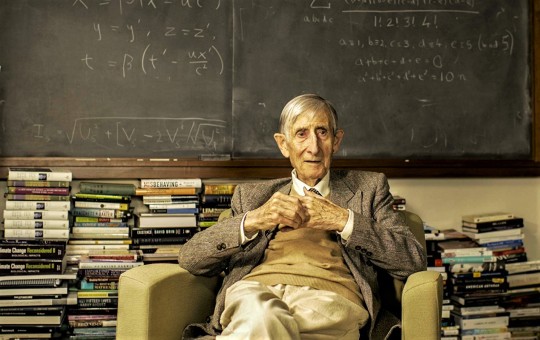
The physicist Freeman Dyson, who has died aged 96, became famous within science for mathematical solutions so advanced that they could only be applied to complex problems of atomic theory and popular with the public for ideas so far-fetched they seemed beyond lunacy.
As a young postgraduate student, Dyson devised – while taking a Greyhound bus ride in America – the answer to a conundrum in quantum electrodynamics that had stumped giants of physics such as Richard Feynman and Hans Bethe. As an author, guru and apostle for science, Dyson also cheerfully proposed that humans might genetically engineer trees that could grow on comets, to provide new habitats for genetically altered humans.
He had already proposed the ultimate solution to the energy crisis: a sufficiently advanced civilisation would, he argued, crunch up all the unused planets and asteroids to form a giant shell around its parent star, to reflect and exploit its radiation. Science fiction writers were delighted. The first suggestion became known as the Dyson tree. The second is called the Dyson sphere.
He was born in Crowthorne, Berkshire. His father, George Dyson, was a musician and composer, and his mother, Mildred Atkey, a lawyer. The young Dyson reported that his happiest ever school holiday – from Winchester college – was spent working his way, from 6am to 10pm, through 700 problems in Piaggio’s Differential Equations. “I intended to speak the language of Einstein,” he said in his 1979 memoir Disturbing the Universe. “I was in love with mathematics and nothing else mattered.”
He graduated from Cambridge and in 1943 became a civilian scientist with RAF Bomber Command, which experienced hideous losses with each raid over Germany. Dyson and his colleagues suggested that the Lancaster bomber’s gun turrets slowed the plane, increased its burden and made it more vulnerable to German fighters: without the turrets, it might gain an extra 50mph and be much more manoeuvrable.
He was ignored. Bomber Command, he was later to write, “might have been invented by a mad scientist as an example to exhibit as clearly as possible the evil aspects of science and technology: the Lancaster, in itself a magnificent flying machine, made into a death trap for the boys who flew it. A huge organisation dedicated to the purpose of burning cities and killing people, and doing it badly.”
The young Dyson was already convinced of some moral purpose to the universe and remained a non-denominational Christian all his life.
After the second world war he went to Cornell University in New York state to begin research in physics under Bethe, one of the team at Los Alamos that fashioned the atomic bomb.
By 1947, the challenge was one of pure science: to forge an accurate theory that described how atoms and electrons behaved when they absorbed or emitted light. The broad basis of what was called quantum electrodynamics had been proposed by the British scientist Paul Dirac and other giants of physics. The next step was to calculate the precise behaviour inside an atom. Using different approaches, both Julian Schwinger and Feynman delivered convincing solutions, but their answers did not quite square with each other.
It was while crossing Nebraska by bus, reading James Joyce and the biography of Pandit Nehru, that the young Dyson saw how to resolve the work of the two men and help win them the 1965 Nobel prize: “It came bursting into my consciousness, like an explosion,” Dyson wrote. “I had no pencil and paper, but everything was so clear I did not need to write it down.”
A few days later he moved – for almost all of the rest of his life – to the Institute of Advanced Study at Princeton, home of Albert Einstein and Robert Oppenheimer, the father of the atomic bomb. “It was exactly a year since I had left England to learn physics from the Americans. And now here I was a year later, walking down the road to the institute on a fine September morning, to teach the great Oppenheimer how to do physics. The whole situation seemed too absurd to be credible,” Dyson wrote later.
He went on to deliver a series of papers that resolved the problems of quantum electrodynamics. He did not share in Feynman’s and Schwinger’s Nobel prize. He did not complain. “I was not inventing new physics,” he said. “I merely clarified what was already there so that others could see the larger picture.”
Dyson tackled complex problems in theoretical physics and mathematics – there is a mathematical tool called the Dyson series, and another called Dyson’s transform – and enjoyed the affection and respect of scientists everywhere. He took US citizenship, and worked on Project Orion, one of America’s oddest and most ambitious space ventures.
Orion was to be an enormous spacecraft, with a crew of 200 scientists and engineers, driven by nuclear weapons: warheads would be ejected one after another from the spaceship and detonated. This repeated pulse of blasts would generate speeds so colossal that the spacecraft could reach Mars in two weeks, and get to Saturn, explore the planet’s moons, and get back to Earth again within seven months. Modern spacecraft launched by chemical rockets can take 12 months to reach Mars, and more than seven years to reach Saturn.
The Orion project faltered under the burden of technical problems, and then was abandoned in 1965 after the partial test ban treaty that outlawed nuclear explosions in space.
Dyson was a widely read man with a gift for memorable remarks and a great talent for presenting – with calm logic and bright language – ideas for which the term “outside the envelope” could only be the most feeble understatement.
In 1960, in a paper for the journal Science, he argued that a technologically advanced civilisation would sooner or later surround its home star with reflective material to make full use of all its radiation. The extraterrestrials could do this by pulverising a planet the size of Jupiter, and spreading its fabric in a thin shell around their star, at twice the distance of the Earth from the sun. Although the starlight would be masked, the shell or sphere would inevitably warm up. So people seeking extraterrestrial intelligence should first look for a very large infrared glow somewhere in the galaxy.
In 1972 – a year before the first serious experiments in manipulating DNA – Dyson outlined, in a Birkbeck College lecture, in London, his vision of biological engineering. He predicted that scavenging microbes could be altered to harvest minerals, neutralise toxins and to clean up plastic litter and hazardous radioactive materials.
He then proposed that comets – lumps of ice and organic chemicals that periodically orbit the sun – could serve as nurseries for genetically altered trees that could grow, in the absence of gravity, to heights of hundreds of miles, and release oxygen from their roots to sustain human life. “Seen from far away, the comet will look like a small potato sprouting an immense growth of stems and foliage. When man comes to live on the comets, he will find himself returning to the arboreal existence of his ancestors,” he told a delighted audience.
He went on to predict robot explorers that could replicate themselves, and plants that would make seeds and propagate across the galaxy. Plants could grow their own greenhouses, he argued, just as turtles could grow shells and polar bears grow fur. His audience may not have believed a word, but they listened intently.
Dyson had a gift for the memorable line and a disarming honesty that admitted the possibility of error. It was, he would say, better to be wrong than to be vague, and much more fun to be contradicted than to be ignored. Dyson was by instinct and reason a pacifist, but he understood the fascination with nuclear weaponry.
He enjoyed unorthodox propositions and contrarian arguments; he maintained a certain scepticism about climate change (“the fuss about global warming is greatly exaggerated”) and he argued that a commercial free-for-all was more likely to deliver the right design for spacecraft than a government-directed effort.
He had little patience with those physicists who argued that the world was the consequence of blind chance. “The more I examine the universe and the details of its architecture, the more evidence I find that the universe must in some sense have known we were coming,” he once said.
His Cambridge mentor, the mathematician GH Hardy, had told him: “Young men should prove theorems, old men should write books.” After Disturbing the Universe, Dyson wrote a number of compelling books, including Infinite in All Directions (1988) and Imagined Worlds (1997). In 2000, he was awarded the Templeton prize – worth more than the Nobel – given annually for progress towards discoveries about spiritual realities.
He was a frequent essayist and to the end a contributor to the New York Review of Books. But he continued to think as a scientist and in 2012 entered the field of mathematical biology with a published paper on game theory in human cooperation and Darwinian evolution.
Dyson is survived by his second wife, Imme (nee Jung), whom he married in 1958, and their four daughters, Dorothy, Emily, Mia and Rebecca; by a son, George, and daughter, Esther, from his first marriage, to Verena Huber, which ended in divorce; and by a stepdaughter, Katarina, and 16 grandchildren.
• Freeman John Dyson, mathematician and physicist, born 15 December 1923; died 28 February 2020
Daily inspiration. Discover more photos at http://justforbooks.tumblr.com
95 notes
·
View notes
Text
Exploring Brazilian Culture!

Below excerpts represent a virtual study of Brazilian culture by Columbia College Chicago (CCC) undergraduate students enrolled in the Humanities, History and Social Science (HHSS) Dept. online course: HUMA121 “Latin American Art, Literature and Music” .
This virtual showing on tumblr is hosted by CCC students enrolled in this HHSS Dept. course with its instructor, Jesus Macarena Avila. This investigation began with a study on Tarsila do Amaral and her involvement with the cultural movement: Antropofagia.
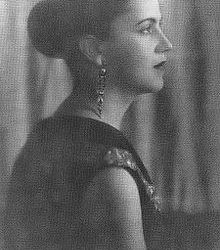
Amaral with creative intellectuals like Oswald de Andrade and Anita Malfatti advocated a new ideology, the Manifesto Antropofago.
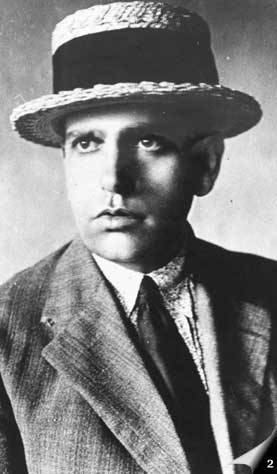
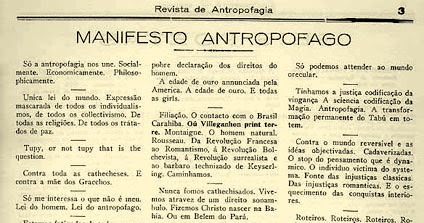
This investigation was only enhanced by the course's online contributors and guests: Dr. Roberto J. Tejada and Ariani Friedl. Dr. Tejada's expertise of Latin American art history and knowledge on Amaral's cultural production.

Dr. Tejada gave cultural and historic interpretations of Amaral's paintings like "Carnaval em Madureira" (1924, oil on canvas, 76 × 63.5 cm) showing the Afro Brazilian influence on the work.

Below are students' comments on what was learnt from Dr. Tejada's lecture:
"The speaker Dr. Roberto J. Tejada did an amazing job really helping me comprehend what was going on, and the different and creative ways with the European side and the afro American side were trying to solidify the culture and understanding of one another’s history."
"Amaral is also well known for creating the work of 'Anthropofagia', according to Dr. Tejada, in which its 'main intention was to create a mythic space in a language of painting through using bold colors and unusual forms, in order to create a vision specific to Brazilian history and attending to contemporary human geography/landscapes'."
"Dr. Tejada gave a great explanation of Amaral’s painting Anthropofagia. Made in 1929, its intention was to create a mythic space in painting using non-contemporary forms and vanguard themes to connect to Brazil's history of violent colonialism."
"Some background information about that Dr. Tejada touches on the fact where many Brazilians might have come from. The government encouraged immigration for the most part from Europe. Around the year 1888, the population contained many white Brazilians but also as well many black Brazilians.
Brazil was also one of the last countries in Latin America to abolish slavery. So even from then on racism was something that was influencing many policies (specifically Immigration policies), systems created in Brazil, etc."
"Dr. Tejada made a good point when he stated 'the word itself, signifies the Tupi language and enhancement, it seems to serve the undeniable presence of indigenous people. The indigenous culture is elevated and given importance just as any other subject European painters would put forward’."

And Ariani Friedl (above) representing Chicago's annual cinematic program: Mostra Brazilian Film Series gave an insight to this year's film programming.

Friedl was recently interviewed by Illinois Latino Voice's TransLatinx artist, Jesus "Jesse" Iniguez, this is an excerpt:
Jesus "Jesse" Iniguez: Due to the national Shelter in Place order, how has Mostra become more accessible to a wider audience this year?
Arian Friedl: Due to the pandemic and the impossibility for us to have a MOSTRA in person, we decided, as many other organizations, to present our MOSTRA XI virtually. This has been a completely new field for us and we have had to learn a great deal of new techniques and ways of doing a festival.
JJI: As with previous festivals, What film(s) are this year’s highlights? What are the themes or concepts being featured for Mostra Brazilian Film Festival 2020?
AF: As you know, MOSTRA present Brazilian films with social conscience and every year we bring films which address different aspects of Brazilian culture, environment, social issues, history and others. This year we will be featuring films related to our political history, environment, gender and race issues and others.
JJI: Thank you so much for your time during our “new normal”. You can find Mostra’s film listings on their official website: http://mostrafilmfestival.org/xi/

Below are student/instructor film review excerpts:

"Amazônia, o Despertar da Florestania", Dirs: Christiane Torloni & Miguel Przewodowski, Documentary/1h 46min/2018 (Portuguese w English Subtitles)

"How has Brazil dealt with nature and its natural resources in the early 20th century? What state is the Amazon Forest in? Based on interviews with specialists from the most diverse areas and the rescue of historical figures, the notion of forestry is discussed: the citizenship of the forest, a term necessary to reflect on Brazilian identity.
Although dramatic, sometimes bordering on desperate romanticism, the questions raised by the documentary Amazônia, the Awakening of Forestry are treated with the necessary urgency and a very welcoming tone by the actress, environmental activist, and now even filmmaker Christiane Torloni.
In her directorial debut, Torloni accesses something profound, mystical, and sacred, but no less concrete or vivacious: the surreal power of the Amazon rainforest – and the risk of its disappearance.A documentary film of a conventional format like this only works with the cast's quality and constitution.
A movie like this is only as good as the level of testimony it collects and makes available to the viewer. Fortunately, there are media personalities of weight, prestige, and intelligence, from the fields of art to sciences. All are coming together to trace and unravel the devastating panorama in which we find ourselves as a society." -- E. Reynaga
View trailer here: https://m.youtube.com/watch?v=0Dvm-VH1L8k
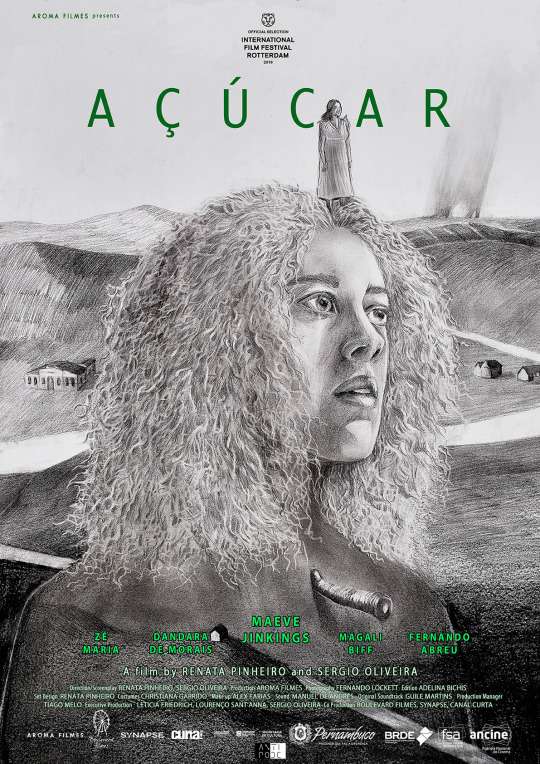
"Açúcar", Dirs. Renata Pinheiro & Sérgio Oliveira, Fiction/1h 30min/2020 (Portuguese w English Subtitles)
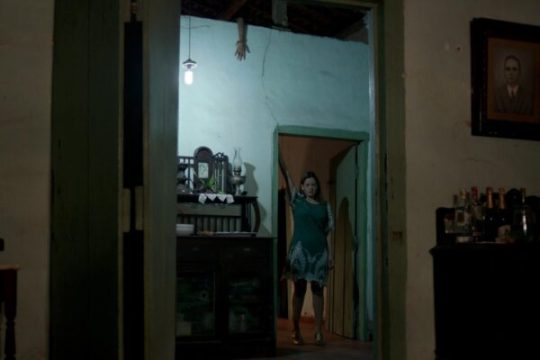
"Açúcar is a surreal but haunting portrait of an aging sugar cane plantation. It centers on the main character, Bethânia Wanderley (played by Maeve Jinkings), a last remaining family member of a historic Brazilian plantation family. She tries to repair the old mansion and thinking of new crops to revive the plantation industry.
Although this is a fictional tale, it does reference actual facts about slavery in Brazil (being the last Latin American country to abolish slave ownership). As the story progresses, Bethânia begins to see or "hallucinate" things around the old mansion, is it the Wanderley's past with slavery? Or is it the local people, descendants of slaves plotting to get the aging land back? Is it this about “revenge” or reclaiming human rights?
It's beautifully photographed against a sugar cane landscape referencing Afro Brazilian beliefs in Orixas and body possession. Directors Renata Pinheiro and Sérgio Oliveira has won awards for their own films and this feature is a collaborative work at re-looking Brazil's slavery and the history of plantation families." -- J. Macarena Avila
View trailer here: https://m.youtube.com/watch?v=rQBfzNZMags
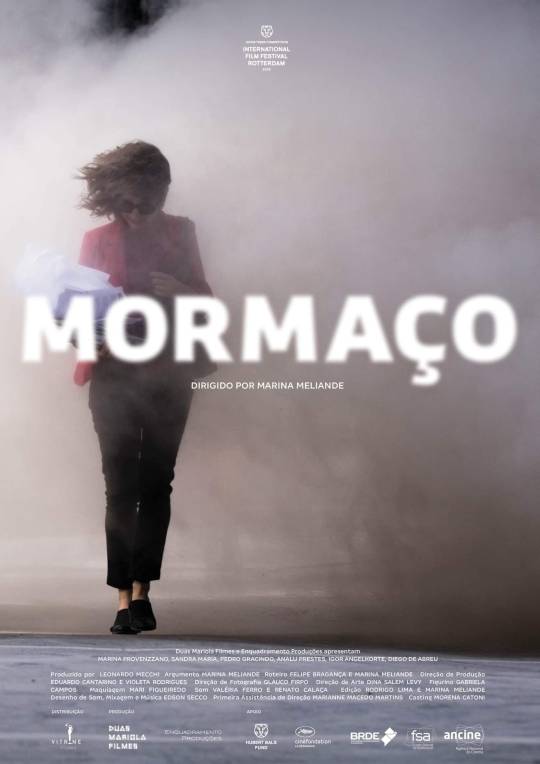
”Mormaço", Dir: Marina Meliande, Political Drama/1h 36min/ 2018 (Portuguese w English Subtitles)
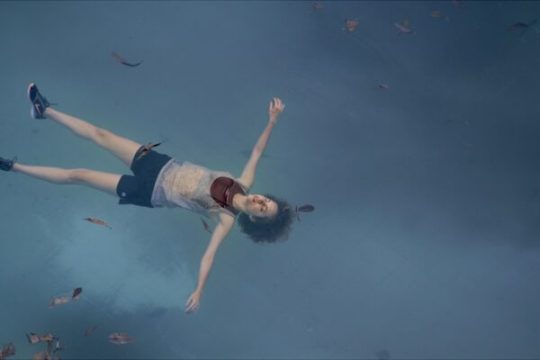
"Mormaço combines different genres, fantasy, political, drama, etc. using visuals to make social commentary about 2016 Rio de Janiero's Olympics. That year, many resident areas were displaced to create attractions for tourism for the Olympics.
This feature is a dazzling, but slow burner story using different genres based on true events surrounding the 2016 Olympics when one of the hottest summers faced Rio de Janiero's area.
It centers on a public lawyer, Ana representing residents being threaten to move. The residents have regular meetings with Ana to prepare to lobby against the city government. Then Ana develops a unknown medical condition that starts a metaphorsis that only complicates her life." -- J. Macarena Avila
"After viewing the film I did some research and learned from an article titled 'Film Mormaço Interweaves Fiction and Reality to Retell Story of Vila Autódromo Evictions' that these events in the film are based on historical events that actually occurred.
The article also states that Mormaço 'makes use of actual footage of these events.' Many of the scenes illustrating war and protest are primary sources that I found very interesting.
Knowing this about the film made me want to watch it a second time to catch all of these primary footages. Mostly because of how seamless the transition from historical footage to current footage. Overall, I felt the film was not only entertaining but also informational." -- J. Heflin
View trailer here: https://m.youtube.com/watch?v=FwSanEqppds
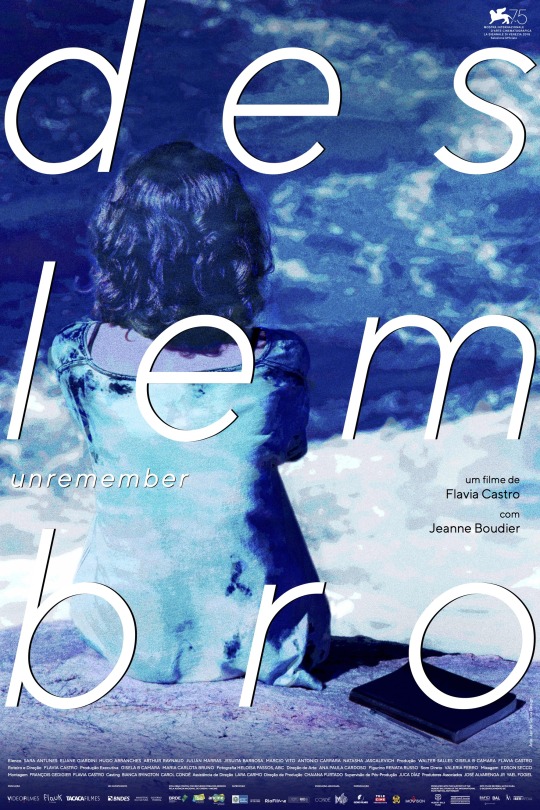
"Deslembro", Dir: Flávia Castro, Drama /1h 36min / 2018 (Portuguese w English Subtitles)

"Quickly summarizing this movie, it’s about a girl named Joanna, who lives with her mom, stepfather, and two stepbrothers in Paris. Her parents announce that they would be moving the family to Brazil and it is very clear at the beginning of the movie how Joanna feels about the decision. Of course, the move is inevitable and the rest of the movie is located in Brazil.
The move to Brazil allows Joanna to be able to explore new things, like the world of literature, her first love, and she awakens politically. Being in Brazil seems to bring up a whole bunch of old disturbing memories from Joanna’s childhood that have something to do with her fathers’ disappearance which then leads Joanna to have a slight hope that her father may be alive.
Leaving this paragraph on a cliff hanger just in case anyone ends up wanting to watch it. I believe that this was a very well written and portrayed movie. It caught my interest because it just seemed relatable. Something realistic, unlike this other movie that I was interested in watching which seemed more fiction based." -- Y. Contreras
View trailer here: https://m.youtube.com/watch?v=4qFP5cbmyEg
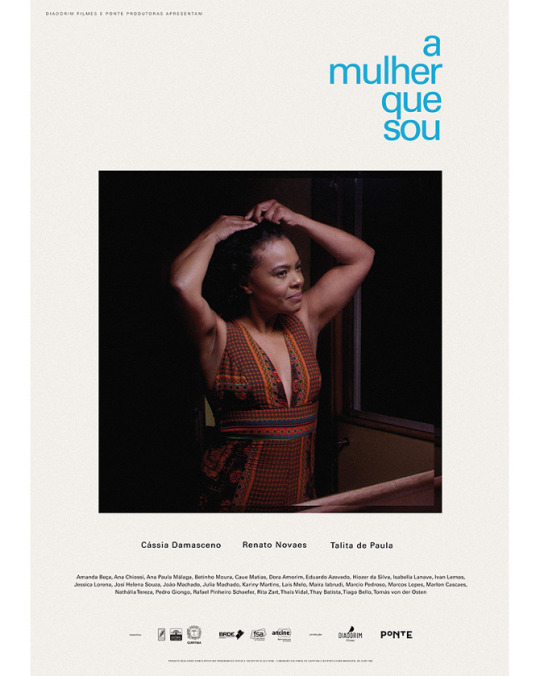
"Mulher Que Sou" (15m), Dir: Nathalia Thereza (Portuguese w English Subtitles)

"The film 'The Woman Who I Am' follows a single mother who is in search of a new beginning away from what appears to be the rural lifestyle she once lived. We immediately begin the story following our main character, Marta, who is traveling alongside a mountain by bus before abruptly switching to a highway where she continues her travel into the city. Later, as she is searching for apartments we are introduced to her daughter who she consults with during this process.
This establishes for the audience their relationship with one another but also theimportance of and emphasis placed on the value of listening to her daughter and including her in this journey. While the prevailing theme of this film, I contend, was identity, we also can identify themes of femininity, single motherhood, modernity, and beauty all woven into the dynamic of Marta’s character.
These intersections help us to understand and even challenge the ways in which we often place mothers in society, especially those that are single or value women past a certain age, questioning their worthiness to be called beautiful" -- G. Paredes
"Oddly enough, the Woman I am was probably my least favorite out of all the films I watched at Mostra. Don’t get me wrong I still enjoyed the film and thought it was pretty good, but it had a lot of potentials that was wasted. There were scenes where the dialogue was too rushed and others where nothing was happening for a particularly long time.
One thing I don’t like is that they didn’t show you some things. For example, the characters would be talking about something off-screen, and the way they were talking about it, you would think it would be some, what of a big deal. They didn’t show the thing in that scene and I thought they were leaving it to be some sort of reveal later on in the film.
But it never gets mentioned again and the audience never gets to see what the characters were talking about. In my opinion, it would’ve been fine not to show it if it was a quick mention but the character made it seemed like it was kinda important.
A reason I did like the film’s 'secretness' is that it captured what the film was supposed to be about: a mom and daughter moving on from their past to a new beginning." -- K. Williams
View this short here: https://m.youtube.com/watch?v=05-F8PDvxdY
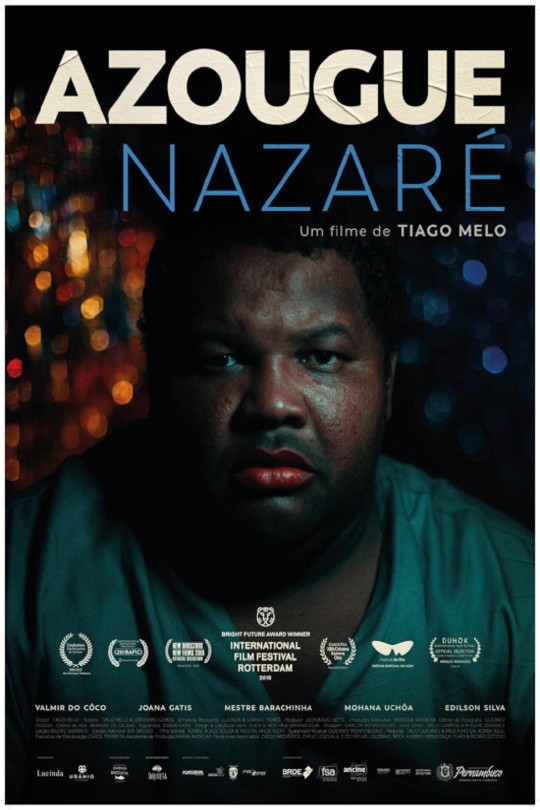
"Azougue Nazaré", Dir: Tiago Melo, Fiction/1h 22min/2018 (Portuguese w English Subtitles)
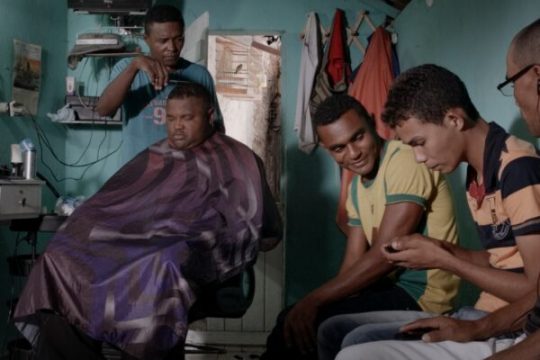
"The film Azougue Nazaré was a drama film released in 2018 directed and written by Tiago Melo. The film is about the start of a new destructive supernatural phenomenon and different spiritual ideologies that collide within this community.
The film touches on religious topics and events in Latin American and was very informational and entertaining. I felt that this film was well put together and although I was not used to many of the different rituals and traditions are shown in the film.
It was very easy to follow along and even relate some of these traditions to ones in my culture. I usually would never go for a film that has to do with religious topics but the film’s artistic values and images caught my eye." - J. Heflin
View trailer here: https://m.youtube.com/watch?v=NFxE51n0IQo
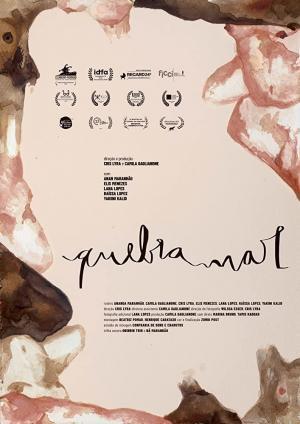
"Quebramar", (27m), Dir: Cris Lyra (Portuguese w English Subtitles)
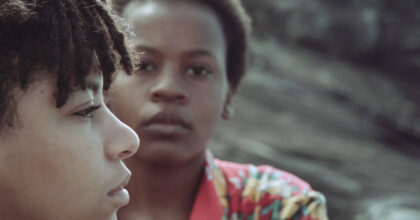
"Going off of Mostra Festival’s description of the film, Breakwater (Quebramar) is a movie about a group of girls from São Paulo who takes a vacation to a remote island for the New Years. While on this vacation, the girls hang out, form a connection, build a safe space, and discuss with each other their experiences being in a part of the LGBTQ+ community.
The things that caught my attention most about this movie and made me want to watch it were the categories 'LGBT' and 'black perspective' because those both relate to me. The movie was filmed in the style of a documentary, though I couldn’t really find any proof it was.
If the film was scripted, then I have to give a huge round of applause to the actresses because they delivered them seamlessly and made it feel natural.One of my favorite things about the film is how casual it was. It was a feel-good film where everyone was having fun, bonding, and really supporting each other." -- K. Williams
View trailer here: https://m.youtube.com/watch?v=xNDquFNV9dQ

"Sem Asas", (20m), Dir: Renata Martins
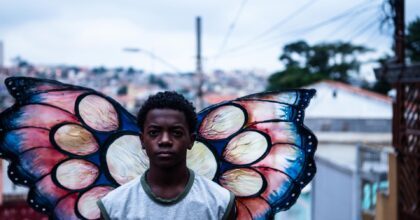
"Sem Asas, or Wingless in its English translation, is a short film about a boy with a longtime interest in flying discovering he 'can'. I watched this movie because it was under the category 'black perspective' but I enjoyed it so much because it broke a lot of basic representation the media gives us.
The film mainly centers around the boy but also features his parents. I mention this because the movie really focuses on this family’s strong bond. That’s one thing media rarely gives movies, films, T.V, and etc that focuses on black representation. There’s always one parent (usually the dad) missing or dead and if both parents are there, the marriage is toxic and on the verge of breaking.
This family however is very close and from what the movie showed us very healthy. They help each other out when asked, joke around, lightheartedly tease each other, and were overall worried for each other. Another thing this film didn’t do that most media does was only make it about struggle.
I won’t lie the Black community does have a lot of struggles and situations it has to deal with but those things are usually the only thing media recognizes us for. While the representation of that is important, it starts to build an image in your head when that’s pretty much the ONLY time you see yourself and your community focused on in media.
Yes, there is black on black violence, broken family, major poverty, and many other things but that’s not all the black community is. I think Wingless did a good job of portraying this."-- K. Williams
View trailer here: https://m.youtube.com/watch?v=ZPkWmJvC-Tc
This for educational purposes and co-hosted by

Friedl's video introduction (created/produced by Sara Vianni) to enrolled students in the HUMA 121 course, "Latin American Art, Literature and Music".
youtube
3 notes
·
View notes
Text
~~Sasuke's Revolution~~
Analysis
{What I want is.... REVOLUTION}
This contemptuous and rather forthright cite from Sasuke is a proclamation of his character inner coordinates as Schopenhauer's philosophy shines brightly as we let ourselves be entralled by the cruel beauty of this seemingly irrational confluence of pent-up inner conflict and Sasuke's response to the ills and mals of a crumbling extraneous society that produced nothing but pain and collective conflict.⚔️
Kakashi wisely concludes in a sheer humanist rhetoric that "Sasuke is the result of the current world's flaws".🌇
His words ascerts that Naruto manga's fictional a universe, as a perfect metaphoric parallelism to the contemporary world, offers an ample overview of the consequences of a world's flaws in its detrimental uncaring decadence; a chaotic system that's governed by corruption, higher ambitions, organized crime, the usage of mass-destruction weaponry and the glutenous strive for dominance, power and conquest. 🏭🛢️🌩️
Masashi Kishimoto crayons a multi-disciplinary narrative allegory of the current world society - - mainly focused on the confluence between medieval Japanese rites intertwined with modern Japan - - where characters' evolution is presented through the technique of metaphysical introspection, which unravels their inner coordinates. ⛩️
In this case, Uchiha Sasuke is the embodiment of the contemporary world's ills in response to the psychological trauma of a system that's profit-oriented.
Kishimoto's personal view of the world rallies with humanism and its organic philosophy.
The two perspective are illustrated in the manga through the two metaphoric answersthat Naruto and Sasuke proposed in their symbolic encounter with the Eremit of the Six Paths - - an introspection into Schopenhauer's Will, congruent to the manga's thesist inclinations and Christian and Buddhist elements about Genesis, karma and cosmogony.
Naruto embodies the humanist view as unyielding trust in the innate good nature of any sentient being, which are moulded and turn into evil by extraneous conjecture.
It's the society and the environment that turns one from good to bad and it's that "turns hatred into love" ; which means that love as an omnipotent transcendental universal force of nature possesses the soul - cleansing ability to make the fallen angel return to his pure, sinless form - - a reflection of the humanist view of the manga.
Kishimoto's solution to acquire universal peace, namely adhering to the humanist view of the world proposes a respectful cohabitation between the two antithetical doctrines - - Yin and Yang harmony/ Naruto and Sasuke's cooperation.
Uchiha Sasuke, as the echo chamber of Kishimoto's empirical view of the world and personal criticism, is the paradigm of one of the two manga's supporting pillars, namely Arthur Schopenhauer's pessimism and life philosophy. The negativism and nihilism, the Antinatalism, the sublime introspection of Will as the pathway to unravel the origins of life and one's life purpose.
In his iconic objectification of Will and the way a person perceived the matter and the material world is intimately intertsined with the personal perception of his Will, or the spirit.
The entire Uchiha clan consists in an expletive repertoire of anti-heroes, whose inner character coordinates are cemented into Schopenhauer's phylisophy of Will and aesthetics.
This philosophic retoric culminates with Uchiha Itachi avidly insists that "all people live with false preconceptions that they call as reality"; alluding that the materialistic reality is nothing but the extraneous manifestation of one's internal consciousness and perception projected on the material world.
Madara's INFINITE TSUKUYOMI is the pinnacle of the Uchiha's allegory as the struggle to vanquish the major source of pain and suffering in the world - - the mindless Will, and tragedy of self-reflection and pessimist introspection.
Uchiha Itachi is one of the few key characters that represent Kishimoto's "echo" of the manga; a self insertion direct intervention from the author into the plot using the technique of self-indertion, along with Jirayia, Hashirama and Orochimaru.
Only when one would deeply and minutely look into his own soul through introspection will he unravel the enigmas of the universe.
It's the implicit apanage of the naturally reflective minds - - the condition of the genius - - to be prone to introspection. The thinker, the genius, the philosopher, are all key attributes ascribed to the uchiha clan members.
Itachi, madara, obito and sasuke are all self - thinkers by nature. Their scholastic philosophical introspection is what offers dynamics to the manga in contrast to the hero's linear life philosophy. They are reflective in their quest to unravel every iots of the world's greatest mysteries that always challenged the most brilliant minds - - scientists and philosophers all-together.
So, Sasuke's REVOLUTION must be analysed in intimate conjunction with his characters inner coordinates and the dynamics of the manga and Kishimoto's solution to acquire universal peace.
His life philosophy can be asserted as "revolutionary" in contrast to the manga's humanist view.
While Naruto's solution to universal peace proposes the preservation of the original (Hashirama's) status quo, Sasuke proposes an avant-garde idea which is meant to surmount the current flawed system with a novel one.
Similarly to Kant and Schopenhauer and their irrefutable influence aesthetics of the world, Sasuke's proclamation causes a huge shock to the audience.
His character portrayal coupled with his life philosophy and symbolism are cleverly and masterfully introduced into the manga as veiled into the aura of earth-shattering avant-garde contrast to naruto's humanist view.
The tragism of the moment wordlessly speaks for itself. Sakura, Kakashi and even Hagoromo are a sublime frame mirror of the audiences shock in front of a radical opposing life philosophy. We are just as dumbfounded by Sasuke's antithetical view as the tragism and the metaphysical stupefaction seems to transcend the inanimate page of the manga and materialize right before our eyes.
The scene is intentionally written as a veritable drama aimed to cause shock, to impress, to challenge the audience to contemplate upon our own life values and principles.
So Sasuke's revolution is a milestone moment that precedes the grand finale of the manga, namely the crossroad between the two major manga ohukosophies - - humanism and pessimism - - as a possible solution to the biggest manga quest:
How can we acquire universal peace?
One suggests that the understanding of the others soul is the answer, she the other ideology suggests that the answer of understanding the universe is to look inside our own selves. "all of you, iwhtour measuring your own power had no idea of mine", Uchiha Itachi.
Sasuke's revolution offers a solution to acquire peaceful cohabitation as self-reflection to proper understanding of the universe.
The origins of the universe resides in the metaphysical understanding of self - - Will.
Sasuke's metaphysical answer to Hagoromo is revolutionary in the sense that it proposes a divergent and completely new, radical answer in sublime anthitesis to the hero's humanist overview.
The illusory idealism offered as the manga's solution to accede to univers peace is audaciously challenged by Sasuke's revolutionary philosophy.
Sasuke's revolution incites the readers to reflect and review their own system of principles and morals and invites to self-reflection.
In Buddhism, reaching the ultimate state of tranquility and inner peace as to quench conflict and pain as acquiring "NIRVANA", can also be possible once a sentient being quenches its inner bodlity desires and cravings to connect to the flow and energy of the universe. The Buddhist ultimate goal of Nirvana also shines brightly into Sasuke's character.
Schopenhauer himself was inspired by the Buddhist phylisophy of achieving supreme peace of mind and transcendental tranquility as the sublime state of the consciousness which attended perfect communion with the universes organic intrinsec flow of universe (the chakra harmonization and control).
Sasuke's seemingly laconic, spiritless and emotionless phlegmatic character is, in reality, the representation of Schopenhauer's metaphysical aesthetic phylisophy of "sublime" and "beautiful". Schopenhauer argues that the sentient being is a slave to his own incessantly rapaceous Will which can only offer morsels of perennial pleasure that can never Last.
However, once the spirit frees himself from the shackles of Will, for it inevitably leads to pain and conflict and suffering, sublime is achieved.
Schopenhauer argues in his double-faceted subjective and objective nature of aesthetics that beauty and sublime can be attained once a sentient being cuts the bonds with his innate starving Will that's prone to incessant pain and suffering (Sasuke attempts to cut all his erstwhile bonds).
Itachi, Sasuke, Madara, Danzo Shimura, Obito or Orochimaru all crayon the same tragic inner conflict, in which the transcendental genius struggles to be freed from the nightingale cage of his own Will. Their reflective nature and the inquisitive philosophical nature creates a sublime conflict that's reflected into their every action and ambitions.
Sasuke makes it clear from the start that "I'm different from you guys. I walk a different path than you guys. I'm an avanger." in which case, Sasuke establishes his role as the tormented genius whose reflections and metaphysical phylisophy evolves in perfect in contrast to the hero's empirical idealism.
While naruto, Sakura, Kakashi, Hashirama are all governed by a linear idealism organic panteism, Sasuke devotes himself to self reflection and introspection. He's always portrayed as detached, reflective and trapped into his own chain of thoughts rather than seeking immediate pleasure by devoting himself to his Will. He isn't glutenous - - while Naruto is obsessed with ramen, Sasuke only orders plain rice - - he isn't prone to be attached to material goods and the bloom of his pubescent and adolescent years is scarce in typical behavioral traits. While most of the teenagers of his age start to explore the hedonic repertoire of their puberty, hormones and discover of own sexuality, sasuke seems rather dissimpasioned and detached.
That's yet another foolproof reflection of his character symbolism in the manga cementing the metaphysical conjunction of Buddhist philosophy of nirvana and is his sheer pessimism, nihilism and negativism.
And his ideologic revolution which inevitably led to his symbolic "I... Lost" - - implying that his nihilism / pessimism lost to naruto's humanist/ idealist doctrine - - artfully offers one last moment of glimmer of the Yang part of the manga's anti-hero aesthetics and phylisophy - the negativism, the pessimism, the nihilism in the light of Arthur Schopenhauer sprinkled with Buddhist elements.
#Uchiha Sasuke#Sasuke's revolution#Uchiha Sasuke symbolism#Nihilism and negativism in naruto#Uchiha clan#Uchiha Sasuke interpretation
7 notes
·
View notes
Text
Upcoming Movies in September 2020: Theaters, Streaming, and VOD
https://ift.tt/2CUVT60
Movies are back! Granted they never really left either, with Netflix, Amazon, Disney+, and others keeping us satiated with content these past five months. Still, the streamers are about to be reinforced for those willing to return to movie theaters: Major Hollywood blockbuster releases are coming, and limited rollouts are slowly making their way back into cinemas around the world.
For that reason, we’ve assembled a list of potential moviegoing experiences in September, whether on the big screen (please consider the risks of attending a theatrical screening) or at home via video on demand. It’s time for the popcorn to get popping.
Bill & Ted Face the Music
Now playing in theaters and VOD in the US (September 23 in the UK)
One of the biggest movies yet to eschew its intended theatrical window for a premium video on demand (PVOD) release is this most excellent adventure. It’s been 29 years since we last saw Alex Winter’s far out Ted or Keanu Reeves’ perpetually astonished Bill, yet it’s good to have both back in their legendary stoner roles.
The fact they’re middle-aged and still having adventures through time and space, and against the visage of Death—he’s still cheating!—is pretty sweet. As is Keanu coming back to this role one Speed, three Matrixes, and nearly five John Wick chapters later. But this time they’ve got daughters (played by Samara Weaving and Brigette Lundy-Paine)… but rest assured, the children are as amused as their dads.
Tenet
Now playing in the UK (September 3 in the US)
Already playing in the UK, Tenet will be making its much vaunted North American debut in “select U.S. cities” in September. We’re still not entirely clear what that will look like, but hopefully it will be worth it for this mysterious and visually dazzling Christopher Nolan epic.
Early reviews are in, and the majority promise Nolan’s most exciting use of IMAX spectacle to date, though even without spoilers, this one might be too big for its own good. Our own Rosie Fletcher describes it as Nolan’s long-whispered about James Bond movie meets Doctor Who…
The New Mutants
Now playing in the U.S. (September 4 UK)
Josh Boone’s journey into the X-Men universe has been pushed back so many times it almost feels like a mythical lost movie. So when it finally arrives in UK cinemas on Sept. 4 (it landed in the U.S. at the end of August) it might feel like a bizarre flashback to another era – namely that of 2017 when the main shoot took place.
Maisie Williams, Anya Taylor-Joy, Charlie Heaton, Blu Hunt, and Henry Zaga star as five young mutants held in a sinister facility against their will. It’s been positioned as an action horror which in theory sounds pretty cool, though what the final cut will look like is anyone’s guess.
Mulan
September 4 (Disney+ with premium)
One day after Tenet makes its U.S. debut, Disney, and more specifically Disney+, offers a starkly different vision for the future of cinema with Mulan. Whereas Tenet will attempt to jumpstart moviegoing, Disney has pushed one of their biggest 2020 blockbusters exclusively to streaming in all markets featuring Disney+, including the U.S. and UK. That means if you want to see Niki Caro’s anticipated reimagining of the 1998 animated Disney movie, you are going to have to pay $30 on top of your Disney+ subscription to get a load of this bad boy on a new PVOD model.
Read more
Movies
Mulan and Tenet Show Competing Visions for Future of Movies
By David Crow
Movies
UK Cinemas Slam Disney After Mulan Streaming Announcement
By Kirsten Howard
Even so, the film’s need to step away from the 1998 version’s iconography—Chinese moviegoers generally dislike musicals—appears to offer an opportunity to make a modern 2020 epic that can stand on its own two feet.
I’m Thinking of Ending Things
September 4 (Netflix)
Charlie Kaufman does horror? Well, uh, maybe?! For his first Netflix original production, the idiosyncratic writer-director behind Synecdoche, New York, and the Being John Malkovich screenplay is adapting Iain Reid’s thriller novel, I’m Thinking of Ending Things. But Kaufman is expected to come at it from his singularly off-center perspective.
With a somber setup about a young woman (played by Wild Rose’s talented Jessie Buckley) going to meet the parents of her boyfriend (Jesse Plemons), the movie is actually about an unhappy lover planning to terminate her relationship. Yet when she meets Mom and Dad (Toni Collette and David Thewlis), things are going to get weirder, if not necessarily better for the relationship…
The Roads Not Taken
September 11 (UK)
Sally Potter’s wistful drama was nominated for the Golden Bear at the Berlin Film Festival earlier in the year before the world went into lockdown. It follows Leo (Javier Bardem), a man with dementia, as he imagines different paths in life he might have taken, while his daughter Mollie tries to help him keep various appointments and struggles with decisions about her own future. A very personal study of mental illness, grief, and regret.
The Devil All the Time
September 16 (Netflix)
Southern fried noir might be the creepiest noir. With its rural and sunny backdrops, and a smiling Christian face, its pleasantries belie an evil heart. And Tom Holland of all people will be driving right to the dark center of it in The Devil All the Time, a new thriller by writer-director Antonio Campos.
Ready to bow on Netflix this month, the all-star cast, which also includes Bill Skarsgård, Riley Keough, Sebastian Stan, and Robert Pattinson, as a fire and brimstone preacher no less, The Devil All the Time reimagines post-WWII Tennessee backwoods as a hotbed of corruption, hypocrisy, and murder. Sounds about right.
Antebellum
September 18 (U.S. Only)
Co-writers and directors Gerard Bush and Christopher Renz appear to have cracked the code in making one of fiction’s favorite fantasies terrifying. You know the type: From Mark Twain’s A Connecticut Yankee in King Arthur’s Court to Midnight in Paris, some congenial fellow travels back to a point in history he loves and has an all-around splendid time. Now imagine that same scenario except the protagonist is a Black woman. And she’s sent to the Antebellum South on the eve of the Civil War. Scared yet?
It’s a disturbing premise that aims to put Antebellum in the same wheelhouse as recent horror movies that have tackled American racism head on, including Jordan Peele’s Get Out and Us. The movie stars the ever compelling Janelle Monáe as a 21st century author trapped inside a 19th century nightmare, and it’s one of the most intriguing setups of the year. It also will be available on VOD and in select theaters.
The King’s Man
September 18 (September 16 in the UK)
Kingsman: The Secret Service was one of the nicer surprises of 2015. A better Bond movie than that year’s Bond film, this Matthew Vaughn directed and Jane Goldman co-written spy adventure was both a satire and loving homage to 007 movies of the 1960s and ‘70s, with excessive swagger and style to boot. Unfortunately, Kingsman: The Golden Circle (2017) didn’t live up to its predecessor. It did, however, make enough money to spawn a prequel. Which brings us to The King’s Man.
As Disney/20th Century Studios’ latest release, this movie sees Vaughn return to the director’s chair as he travels back in time to World War I and the origins of the Kingsman secret service. With the same daffy style but now in period garb (it worked for Vaughn in X-Men: First Class), the prequel hopes to recapture the charm of the original. It certainly has a winning cast that includes Ralph Fiennes, Daniel Bruhl, Djimon Hounsou, and Gemma Arterton.
Kajillionaire
September 18 (October 9 in the UK)
One of the happy discoveries out of this year’s Sundance Film Festival, Focus Features’ Kajillionaire is a movie we’ve had our eye on for a while. The picture is writer-director Miranda July’s pleasant vision of criminality and heists being the stuff of family team-building. Take Evan Rachel Wood as Old Dolio. She’s an adult daughter whose depression has forced her to live at home with her small time crook parents. But Mom and Pop (Debra Winger and Richard Jenkins) have a plan; they’ll incorporate their daughter in the next heist and bring her out of her funk. It’s a charming premise that won over almost every critic who saw it back in January.
The Nest
September 18 (U.S. Only)
Another apparent highlight out of Sundance this year, Sean Durkin’s The Nest presents itself as a foreboding drama. As the follow-up feature from the director of Martha Marcy May Marlene, the film intends to be an unsettling account of a wealthy marriage descending into Gaslight levels of manipulation. With Jude Law as the rich patriarch and Carrie Coon as his quietly suffering wife, a sudden move to the country reveals dark dimensions to their relationship and the brittleness of domesticity. If the buzz is to be believed, the wound up WASPy tension in this could strangle an elephant.
Enola Holmes
September 23 (Netflix)
Did you know Sherlock Holmes had a little sister? You’re about to thanks to some strong synergetic mojo going on at Netflix with Enola Holmes, a new mystery/adventure that stars The Witcher’s Henry Cavill as Sherlock, The Crown’s Helena Bonham Carter as Mrs. Holmes, and Stranger Things’ Millie Bobby Brown as the eponymous Enola. That’s right, Eleven’s going to use her own English accent and play Sherlock’s kid sister.
Often kept in her famous brother’s shadow, it is up to Enola to do him one better when she sets off to find their mysteriously vanished mother. In the process, she proves she’s a super-sleuth in her own right and brings to light a deadly conspiracy. The game’s afoot!
Misbehaviour
September 25 (Open in the UK)
A crowd-pleaser that debuted earlier in the year in the UK, Misbehaviour has all the markers of a charming dramedy with real world ramifications. In fact, it’s set during the events of the Miss World competition in 1970, a televised beauty pageant in London that was then the most-watched event on the planet. In this context, the Women’s Liberation Movement reached international acclaim by disrupting the proceedings, and a Woman of Color from Grenada became a contender for the Miss World title.
Director Philippa Lowthorpe (The Crown) reportedly explores these events to winning results with an ensemble of players that Keira Knightley and Jessie Buckley as lead activists, Gugu Mbatha-Raw as Jennifer Hosten (aka Miss Grenada), and Greg Kinnear at his greasiest as an aging Bob Hope.
Greenland
September 25 (U.S. Only)
Imagine this: A comet that is supposed to gently pass Earth by was misjudged by the science community, and instead a cataclysmic extinction level event occurs with comet fragments destroying parts of the world one action scene at a time! Yeah, in 2020 that sounds about right. It’s also the plot of Greenland, a new high-concept survivalist action movie starring Gerard Butler as a family man who, realizing Florida is gone and his home state is next, tries to save his wife (Morena Baccarin) and child by getting his family to the last place that may be spared: military bunkers in Greenland!
And you thought U.S. leadership was being ridiculous when it tried to buy the country a few years ago…
The post Upcoming Movies in September 2020: Theaters, Streaming, and VOD appeared first on Den of Geek.
from Den of Geek https://ift.tt/2EO8EjF
3 notes
·
View notes
Text
"1080p" Angrezi Medium 2020 Hindi Full Movie Download GDrive
Angrezi Medium 2020 Hindi Full Movie Download 720p Google Drive, Angrezi Medium Movie Download 480p Watch Online, Angrezi Medium Irrfan Khan Movie

English Medium (2020)
IMBD Score: 9.0/10
Language: Hindi
Angrezi Medium (original title)
2h 25min | Drama | 13 March 2020 (USA)
Director: Homi Adajania
Writers: Bhavesh Mandalia, Gaurav Shukla
Stars: Irrfan Khan, Radhika Madan, Kareena Kapoor
Click Here To DOWNLOAD NOW
Angrezi Medium is the Hindi translation of a French movie called My Pretty Pony. The movie has been receiving mixed reviews in France since it was first released. Many have accused the film of being sexist and the story and storyline of the film are considered a little confusing.
youtube
A handsome, unassuming mithai shop owner is about to fulfill his daughter's dream of studying abroad in London. But, certain mishaps force him to leave his wife and young son behind and embark on a journey to India. But the journey takes him back to Mumbai, where he learns about his past and his destiny. But along the way, his son becomes his best friend.
Some fans believe that Angrezi Medium is more like a Hindi version of the American movie The Great Gatsby. Others have said that it is similar to the movie Lord of the Rings. The movie revolves around a man who leaves his son at home to accompany him on his trip. They become stranded on the wrong side of the world, but together they learn about each other and the other half's future.
One major complaint against the Angrezi Medium movie is that the plotline is not very clear. In the beginning, the main character is told that he must return to India to help his father, who is sick with cancer, and then travel to London to get married. But when he returns, he finds out that the storyline was changed and now he is told to get married in India to a white girl. There are also some critics who argue that the character is a racist, and is more concerned about his own status than the status of his white wife.
The movie also features some of the typical Hindi melodrama. Although the story is a bit confused, there is still some confusion with the characters, and some of the interactions are a little confusing for those who do not know Hindi. But many people, especially the younger generation, loved the film, saying that it is a lot of fun and a great story to watch.
Many of the critics have said that the film is not a perfect Hindi movie. but it is still considered as one of the better Hindi films. In fact, many consider the movie to be better than most of the Hindi movies of this season.
The Angrezi medium 2020 movie is the latest film adaptation of a science fiction novel that has become wildly popular in recent years. The book is by Gregory David Roberts and was originally published in 2020. In this article, I'm going to give an Angrezi medium 2020 movie review of the film adaptation.
The story of the book, which is based around the fictional planet of Angrezi, revolves around a group of teenagers who have a rather unusual encounter with a being known as the Angrezi Medium. This being is responsible for their ability to communicate with the dead and the power of which has led to its reputation as a supernatural being.
The film is based on the book adaptation, although the main characters are the same as in the book, it has been changed so that there is now a whole new generation. The new generation is very different from the previous generation as they have developed the ability to communicate with their deceased family members from past lives.
The main characters are the main character from the book as well as some other interesting ones. There is a new character played by Christian Bale, who is the most prominent character and also happens to be the only one who can control this ability.
One of the other characters also plays an important role in this film and that is a villain called Lord Karnac. He is a villain that wants to bring about an Earth ending and he uses the ability to create dark energy around himself that causes the death of the human race.
Overall this Angrezi medium movie review is going to show you what is different from the book and the main plotline. It also looks at the many other characters and their roles in the film. I hope you enjoy my Angrezi medium 2020 movie review and stay tuned for more reviews in the future.
The movie begins with a montage of the first meeting between Greg and the protagonist, named Gabo. They both were in the same class and he asks her to let him tag along.
When the two arrive, they are immediately set upon by Lord Karnac who attacks Greg and attempts to capture him. As a result, Greg escapes with the help of a few other students. After he escapes, he goes to visit his father who is on the verge of giving up on life again.
In the following years the characters have to find a way to prevent the Earth from being destroyed and find a way to stop the world war that is starting. As a result of the war, the future generations are separated and they have to learn to live together. As a result of this separation the future generations will begin to learn about their past lives and the power of communication.
An Angrezi Medium 2020 Bollywood film has been added to the ever-growing collection of Hindi films. This film, starring Sunny Deol and Bedi Sareen, was filmed in Andhra Pradesh and Tamil Nadu. The plot revolves around an old woman called Angrezi who lives in the foothills of the Himalayas and is looking for a means of transporting her daughter to Delhi.
The Angrezi Medium 2020 Bollywood film is set to be released on August 6, a day before Diwali in India. It is expected to be one of the biggest films to come out of Bollywood. The director is Shyam Benegal, who has directed films like Baazigarh, The Lunch Box, etc. The actors that will star in Angrezi Medium 2020 are:
Benegal, Sareen, and Deol are best known for their roles in Hollywood. These films have won them many awards and made them well-liked in Hollywood. Benegal's previous film 'Lunch Box' had received great reviews in the USA. This will make it even more popular in America.
This film is expected to be a blockbuster that can break all barriers when it comes to Bollywood. The production cost for Angrezi Medium 2020 is reported to be very low, which is the main reason for it to be released at such a huge time. Although this film will release only a month after Diwali, it is believed to have the potential to generate huge revenues.
Benegal is also expected to win his first Academy Award this year for his film. The film is expected to do well at the box office with many Bollywood critics claiming that it is the most promising film in the upcoming year.
The film is likely to attract a wide range of audiences including both male and female viewers, as Benegal is popular among both sexes. This will also add another edge to Benegal's already impressive resume. The film is expected to be the best selling Hindi film of the year.
In fact, Benegal's next film, Bollywood's first blockbuster in 20 years, is also predicted to do exceptionally well in its box office. The film is expected to be a high-profile blockbuster, and Benegal is expected to have another Academy Award coming his way for the success of Angrezi Medium 2020.
Although the film is said to be a blockbuster, there are no guarantees of any kind, especially in Bollywood. There are no guarantees that the film would be a success, but there is no reason why it could not be. and it will definitely be considered one of the best films of the season.
The release of Angrezi Medium 2020 is the first part of the upcoming Hindi movie season, which is expected to be highly competitive with other leading films like Baazigarh, Ek Tha Tiger, and Jodha Akbar. The film is set to be released during the second week of August, right before Diwali.
Click Here To DOWNLOAD NOW
1 note
·
View note
Text
GreedFall: Tips + My Review

So I picked up this game out of curiosity because I’m currently working on an RPG style historical fantasy that draws inspiration from a similar time period. I wanted to see how someone else handled the ‘flintlock’ genre and told a story with elements of this era. I am in no means a pro game reviewer but I completed the entire game yesterday and I have a lot I want to say.
There are some spoilers in this, so if you’d like to avoid reading them, don’t read the "Story” section.
Tips:
Do your companion quests early and as soon as they pop up. There are some incredible lore bits and development of your character as well as your companions within them. Also if you sideline a companion for too long, they might leave your party in ways that might surprise or unsurprise you.
Certain dialog options will give you more quest content. For example, you’ve caught a criminal and you are given the choice to kill them on the spot, or capture them for trial. If you kill them, your quest line ends there. If you decide to trial them, another quest line opens up and you get a lot more flavor.
You can essentially just follow the main quest line if you want to speed-finish the game, but you lose a lot of context and additional dialog options if you do so. You will also wind up fighting the final boss at a much lower level, thus making the fight harder, but not impossible. They may have made this an option for people coming back wanting a challenge or to try a different build. But in my opinion, they should’ve made the side quests a mandatory thing because it’s a huge disservice to the context of the main story without them.
Don’t forget to give your companions gear upgrades- especially if you’re playing on more challenging modes.
If you want to avoid bloodshed and sneak into a camp, make sure you put on a chest piece of that faction.
Put some skill points into Stasis no matter what build you roll with.
The Soundtrack:
It’s amazing. The snare drums going off in combat sequences create a very distinct and powerful mood. The zone music is very well orchestrated. It’s now up on spotify as well!
Combat & Talents:
Of the RPGs I’ve played, this most reminded me of a combination of Red Dead Redemption, Final Fantasy with the option to semi-turn style with spells & traps, and a very versatile talent tree system that is really...fun. It’s the first time in a while that I felt I could make an effective solid build and playstyle around what I wanted to do most. Combat takes getting used to but I set up my keybinds to be a lot like ESO and I adapted very quickly. I went shortsword / gun tactical and it was immensely satisfying.

The Story:
[SPOILS AHEAD]
The difference between historical fiction and historical fantasy is that a historical fantasy does not seek to retell history accurately, but rather take inspiration from it. How heavy this inspiration goes varies from story to story. This is how I approached interpreting the story, even in its very realistic parts. As I played through, there were several themes that became very clear to me. Keep in mind that I played through the game with De Sarde taking the Neutral Good alignment choice in most dialog options.
The Elephant in the Room: Colonialism.
This is one of the big criticisms I see with the game, and truth be told, it is a point of criticism for myself. The game treats the colonizing factions exactly like colonizers of real history, and it’s a subject that still rightfully touches nerves. One faction seeks to profit, another nation seeks to convert, and another seeks to experiment on. While there are subgroups of these factions that are more extreme than their leadership- the leadership seems complacent about it until condemning evidence is brought up. While extremely problematic this is, it is very true to what has happened in history surrounding colonialism, and places you in one uncomfortable situation after another in a frighteningly realistic way. It makes your decisions as De Sarde in some instances painful but it can be satisfying to see how your actions affect justice in these matters.
Some critics have said that De Sarde’s choices do not always condemn truly objectionable events enough. I agree that more depth could have been added. But in my playthrough, De Sarde’s role starts out as a truly neutral party looking for truths, and they gradually became more adamant on stances as the game progressed. By the end, my De Sarde was about to 1v1 Theleme, and drag out the Bridge Alliance governor. So I am unsure if this is a perspective coming from those who haven’t completed the game in its entirety with all side quests which influence reputations more & seem to flesh out more dialog options.
Humanity Has a Sickness
This was written both physically and metaphorically in how humans are as susceptible to committing atrocities as they are to growing ill. Throughout the story as De Sarde, you play almost a detective in uncovering the truth about the people you were raised to believe were benevolent. De Sarde does not take these accusations of corruption lightly, but they also treat it very seriously. Piece by piece, De Sarde learns more about each factions true intentions, and the lies, corruption and greed that intertwine. But at the same time, the story attempts to reveal the potential for all people to ‘do better’ and change- and some of this is seen when you use De Sarde’s charisma + intuition dialog options. This theme especially became clear in the arc when De Sarde finally gets to speak to the god of the island, En on mil Frichtimen, who expresses to him that the malicor (sickness) is a result of them poisoning their own land with their lack of care or concern for it. En on mil Frichtimen urges that the colonists need to listen and learn from the Islanders’ ways if they wish to heal the sickness.
Where to Draw the Line at “For The Greater Good”
I feel like this is a theme that crops up with any story involving Utopian ideas. GreedFall does a good job of backing up each faction’s actions with their point of view, whether it is morally misguided or not. This truly emphasizes the human element in the mix, underlining that no perspective comes without its flaws. As De Sarde, one thing you are constantly faced with as a detective is defining a line of where something has gone too far. It is sobering and somewhat frustrating to watch factions step over a line that could have easily remained morally sound. But it is also equally satisfying to see how much influence you can have in swaying others to make a different choice. This theme becomes the summit of De Sarde’s character progression when he is forced to make the choice of taking your dear cousin, Constantin, out of power, or joining him. And when you’ve done all the side quests there are in the game, the decision becomes far more meaningful than this just being the final boss fight.
This theme also seems to come full circle by the end of Petrus’s quest line, when you discover your true origin- how your mother was kidnapped from the island in a rash attempt to bring a healer to the continent. This realization that everything you’ve known has been a lie and kept secret from you...all for the “greater good”.
Things I Liked:
I appreciated how much love and care went into the worldbuilding- especially with the native Islanders. From what I understand, a linguist was hired to write a language for them that was a mash-up of Flemish, Breton, Gaelic and Irish. I appreciated that they brought forth inspiration from the Gauls and Celtic nations of the Iron Age in Western Europe before they were subjected to Christian Missionary activity.
The art & atmosphere was amazing. While there are a few clipping issues with hair, even big AAA games have them. The level of detail put into the game art wise is just very visually pleasing.
The devs did a good job in making a fantasy world that was LGBTQ+ friendly, and giving us diverse character customization. Anyone from any faction had a diverse set of features.
Things I am Critical of:
While I understand that there is a point of growth to watch De Sarde go from neutral to invested in a cause, I really do think they should have been given less complacent responses earlier in the game. I understand limitations but I don’t think it helped with handling colonialism in a truly neutral way.
I wish you could start the game as someone from a faction of your choice, rather than only the Merchant Congregation, especially considering how your origin is written.
IT’S DEPRESSING. A lot of the game is depressing... which maybe makes all the little things you do that shine some shred of goodness still in humanity all the brighter. But it definitely hurt my soul in places and back to point #1, I wish I could have been more aggressive with De Sarde earlier in the game.
Recycled assets: there were quite a few of them- mostly noticeable with buildings in the main cities, which is probably what marks the difference between an AAA game and a more independent studio.
Potential Triggers:
There’s a lot of heavy subjects in this game including religious abuse, manipulation, some body horror (though it’s not super grotesque), one instance of suicide that I know of, xenophobia, and general violence.
Features I Wish it Had:
You can’t ‘jump’...but you don’t really need to. I still wish I could though.
For all this beautiful scenery, I wish they gave us better screenshot taking options.
Different fights for the different Coin Arenas and a meta achievement for completing all of them.
I wish I could play it with friends.
More armor options!
I wish the companions had better and more in-depth romance options. They fall a little flat in diversity of personalities.

Final Thoughts:
I personally enjoy diving into stories that we should be morally critical of, and I like it for what it reveals in the best and worst of humanity. Colonialism has done and continues to do irreversible damage to peace and prosperity among people and nations in real life. Spiders picked a topic that nearly everyone has been affected by in one way or another and it’s understandably a heated subject. Some folks do not want to dive into such deep subjects, just as there’s some stories I cannot stomach comfortably. So I respect and understand that.
Overall, GreedFall exceeded my expectations but there’s definitely some hiccups. It’s a fun game if you’re into a detective-style RPG, political intrigue, history, and interested in exploring this sort of setting. While I think the story could have been written better in places, I was satisfied with the outcomes I triggered, even if that satisfaction took a very slow build up to. It left me feeling hopeful? That perhaps people still have a chance at treating each other better than they do.
37 notes
·
View notes
Text
After Anthology Review
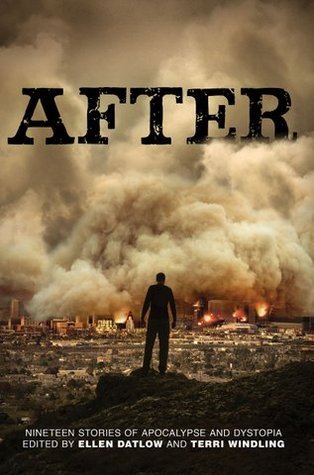
4/5 stars
Recommended for people who like: anthologies, dystopia, apocalyptic fiction, post-apocalyptic fiction, survival stories, end of the world
The Segment
5/5 stars
It’s been a while since I’ve read this entire anthology through, normally I just pick out the stories I like and read those, so I’d forgotten this story was in the book and I’d actually given up on ever finding where I’d read it. I love this one. It gives a nice twist to what media might look like in the future, and though it was written in 2012, it certainly gives a whole new meaning to the term ‘fake news.’ The story has a post-apocalyptic dusty vibe to it, where it’s rough and tumble, but no one is exactly miserable, and the characters definitely have the ‘fend for yourself’ that’s typical for the genre. Something I think is unique is that society hasn’t collapsed and it’s not pretending to be a dystopic utopia, it’s just society and this is merely how it’s turned out. It’s definitely one of my favorites in the anthology and the twist(s) at the end are fantastic and hard to see coming.
After the Cure
5/5 stars
This is another one of my favorites and is actually the story that I usually skip to first. I thought for years that this was a zombie story, but this reread I noticed that the protagonist suggests they’re vampires…but they still seem to be zombies, so we’re going with zombies. I don’t like zombies. Ever. I avoid all books, movies, and TV shows about them, but this short story is so bloody fantastic (and the zombie part actually minor enough) that it’s one that I reread about once a year. The story follows a cured zombie-vampire-whatever and the weird sociolegal space she finds herself in after being rehabilitated. Thought short the story explores who the monsters really are as well as whether being cured is always something to be desired. The former is something that you see a lot, but I don’t see a ton of the latter and I enjoy how Ryan looks at the sense of community that comes with being a zombie-vampire-whatever and how that community (as well as the hunger) lingers and is something the cured still feel and desire.
Valedictorian
4/5 stars
I always find this story a bit confusing, though I think I’ve read it enough now that it makes some sense. It’s set about a century after humanity’s war with androids and now the bottom 10% of high schoolers and the top 1% are taken outside of the Firewall (which isn’t explained, but I’m assuming it’s a virtual, code-based electric fence). I’m not sure how I feel about the story itself, but I do like the main character, Zinhle, who strives for excellence even knowing the consequences and allows herself to be angry. The story is a bit of a ‘tired of smalltown’ story, but sci-fi and more like a slice-of-life than Chris Pine’s version of Captain Kirk, who proceeds to go on and have adventures. Zinhle feels more real.
Visiting Nelson
3/5 stars
This one’s set in a post-apocalyptic London after flooding has turned it into a wasteland. It’s written dialectally, which is interesting and adds a nice element to the story, but even though I felt connected to the world, I wasn’t drawn to the characters or even the plot, really. I liked the idea of the characters going to see this person/thing they called Nelson (who is Nelson from “Kiss me Hardy!” and the Battle of Trafalgar, not Nelson Mandela). The bits where Charlie, the narrator, talks about the floods and the way London has changed are also interesting, but the main part, about Morris and nirv and the Hairies were not all that interesting to me, though Langrish did a decent job worldbuilding.
All I know of Freedom
4/5 stars
TW sexual assault
This story starts one way and then does a switchback and begins going another way. In the beginning, it seems like the story will be about a future where society’s regressed and gone back to the whole ‘rich kidnap/buy foreign kids for labor’ sort of thing, but then it ends up being a cult story. The slave part of the story is brief and reminds me a bit of The Little Princess, but the interesting bits come later on, when it turns into a cult story. The narrator is about 12- or 13-years old and stumbles across the cult on accident, though she quickly becomes an insider. I liked seeing the different perspective a kid has of a cult than what an adult would have and the manner in which the narrator makes her decision about going to Proxima Centauri with the cult or staying on earth.
The Other Elder
4/5 stars
I will say, I really really liked Revis’ Across the Universe series when I first read it, but I tried rereading it again recently and just found the whole thing too creepy for my liking. This short story is a prequel to those, and like most prequels, you needn’t’ve read the originals to understand this one. Weirdly enough, I actually find this story less creepy than the original trilogy, even though it deals more with the nitty gritty of mind control and the ‘need’ to have everyone conform. I think my favorite part of this short is how well Revis shows that the things we adamantly believe in as a kid don’t hold true as an adult, and how sometimes our adult selves would disappoint and anger our younger selves. I will say though, I would’ve liked a scene in the middle where it becomes clear why Elder changed his mind—I mean, I can guess and I’m sure there’s a decent chance I’m right, but sometimes I like direct answers.
The Great Game at the End of the World
3/5 stars
This is another confusing one. I think something similar to the rapture occurred, though it also involved the semi-destruction of the world into a bunch of fragmented floating pieces. I liked the Before/Now switching of the scenes, which served to help explain some of the other creatures/characters in the story, but also to give background on the narrator and his sister as well as the world before. I can’t really pinpoint why I’m not a fan of this one, because the setting and other creatures/characters are interesting and pretty unique, but I just don’t vibe with this story.
Reunion
5/5 stars
I like this one, though I can’t put my finger on what exactly it is I like so much about it. It seems to take place almost immediately after the overthrow of a dictator, with an older sister and a mother looking for their missing little sister/daughter. The story is largely told through dialogue, with Mama or Isabella explaining to the young ‘Maria’ what the truth of her family is, how she got taken, how they tried to find her, and so on. While it’s clearly a form of telling exposition rather than showing it, the dialogue is full of enough imagery that I have no trouble picturing what’s occurring and it doesn’t feel like I’m being ‘told’ anything. Isabella in particular intrigues me. She’s rather rough and tumble, having worked with/for the partisans to overthrow the government and I wish there was a longer story exploring Isabella and her life, either before or after the government overthrow.
Blood Drive
5/5 stars
TW shootings
This story is a sort of ‘what if safety laws were repealed in the US’ sort of thing, where labor laws stopped being a thing, church is mandatory (and I’m guessing Christian), and everyone carries a gun. I’ll be frank, after the Parkland shooting when people were talking about having teachers carry, this was the story I thought of. This story is in part about the guns, but it’s also about living normal life under extremism. The way the story is written, you’re following a normal citizen who goes to high school and has a girlfriend and tries to figure out what she’s going to do after high school. I think I like the story so much because it’s somewhat of an unusual storyline—most stories that take place in extremist countries have the protagonist as a rebel—and it has a soft ending.
Reality Girl
4/5 stars
TW f-slur
This is another story that has to do with media, but with a lesser focus on it than the first story had. In this one, something’s happened in the US that’s triggered its collapse and left the streets and waterways unsafe and UN Peacekeepers maintaining ‘temporary’ patrols and charity tents in the country. I like the concept of a truly destroyed US that wasn’t destroyed by infighting or even by war. Pure water is precious and the price for making the money to have access to it is exposing yourself to radiation and biohazards, meaning the risks of life after the end are never far away. I love the dystopian/apocalyptic genre and there are a lot of good writers in it that make the worlds real, but it’s hard to make the threats and consequences in them seem real sometimes, but I feel Bowes does a good job of that in this. There is a weird moment at the end, though, that definitely feels like a ‘and everyone clapped’ moment, which I wasn’t fond of.
How Th’irth Wint Rong By Hapless Joey @ Homeskool.guv
3/5 stars
Yeah…not a fan of this one. It’s written like it was written by someone who is largely illiterate, which is fine. It adds some authenticity to the piece and it actually isn’t hard to understand what’s being said. On the surface at least. I just don’t understand what the story is about. Or why. This kid is writing an essay about how the world ended for some contest and the contest is a scam, but there’s zero reason for me to care about this kid or this world and it’s really just something to read to get to the next story.
Rust with Wings
4/5 stars
I remember this story fairly well, though I think this is the first time I’ve reread it in several years and I’ll admit that it ends differently than I remembered it. In this one, some bugs have taken over Arizona and New Mexico and these bugs eat metal and are attracted to things that send out electromagnetic waves. I believe this is a prequel to another series by the author, but don’t quote me on that. I really enjoyed this one and the ingenuity the characters showed getting away from the bugs.
Faint Heart
3.5/5 stars
This one felt more like a novella than a short story, with a decent amount of background for each character and multiple POVs. It feels a bit more like a fantasy novella than a post-apocalyptic/dystopian one, but it’s still well-written and the world is vibrant. As lovely as the background and world-building is, the characters fall somewhat flat, I find. I don’t care at all about Tor, so I mostly tried to just speed through his POV. Yvain was interesting, but I would’ve liked it better if there’d been more of him back when Persie was alive, as his later self is just kind of a dick. Roz was actually interesting and I liked her character, she’s a bit of a trope, but at least she had vibrancy and personality to her where the others didn’t. If it had just been her, and the story continued through the trials, I’d’ve been more interested, I think. Also, a story about Miri and Dareus would be interesting, they were also deserving of more page time.
The Easthound
4.5/5 stars
Like most of these, I like the concept of this one. It’s a twist on the ‘lycanthropy virus’ where the virus sets in when people hit puberty, but not before (and if you’re already an adult then you get infected). I even like the characters in this one, each of them seemed to be pretty well fleshed out and even if they act silly in the beginning it doesn’t feel out of place. I love the twist at the end too and the fact there’s so many hints before that, but you still don’t see it coming until you’re there. My only real complaint is that I wish the story was longer.
Gray
2/5 stars
This one was a poem. Which is fine, I like poetry, but it isn’t even a very good poem and it certainly doesn’t fit with the rest of the theme of the anthology.
Before
5/5 stars
This is another one that takes the past and twists it a little to make it the future. In this one, a little Indigenous girl has been stolen from her parents by invaders who experiment on her in an attempt to find the cure for a manufactured disease. I really liked the focus on naming and storytelling in this one. The storytelling not only tells us something about the narrator, but it also serves to show aspects of the narrator’s culture, and the naming aspect has a poignancy to it that I rather enjoy.
Fake Plastic Trees
3/5 stars
I don’t dislike this one, but I also don’t like it either. It’s set after a breach at an MIT lab lets loose nanobots that turn about 70% of the world to PVC. For some reason, it took the arm/National Guard seven years to find any other survivors. When you have places like Montreal and San Francisco surviving, the fact that the surviving portion of Jacksonville doesn’t know about the rest of the world and its new technology feels somewhat like a plot hole. Also, I wasn’t a fan of the narrator. But the narration style is interesting, it goes right along with that ‘purposefully narrating’ and unreliable narrator stuff I like so much in other stories.
You Won’t Feel a Thing
4/5 stars
This is a prequel (companion prequel?) to Nix’s series Shade’s Children. I think the concept is interesting, with people 15+ disappearing one day and some alien/monster things coming and mutating kids. It even has the pocket of resistance/survivors thing I like in other survival stories. There was plenty background information so nothing about the world was confusing, but I’m still left feeling like the story was about that damn toothache more than anything else and what I want to feel is the opposite, so I knocked a star off.
The Marker
4/5 stars
This is another pretty good one that I’ll come back and reread on its own sometimes. I like the dystopic!Roman feel of the story, with the people who ensure the health and continued growth of the population known as Paters. I also found the color and DNA system interesting as well, and while the DNA is explained, the color never is. The characters don’t interest me too much, but I like the mood and tone of it.
3 notes
·
View notes
Text
Torture in Fiction: Black Butler, Season 1, Episode 20
My first impression of this anime was that uh- the writer has some odd ideas about Victorian England. It makes the show a little bit strange for me; there are so many things about the way the period is portrayed that are just… wrong. For me that made the episodes I watched very jarring and distracted from the carefully constructed undercurrent of menace that runs through most episodes.
I didn’t dislike it. But I love history. I know my history. And watching this felt a little like watching an updated period propaganda piece that wasn’t written by a Brit. It’s bizarre.
But I’m not here to talk about how other cultures are depicted in Japanese media. I’m rating the depiction and use of torture, not the anime itself. I’m trying to take into account realism (regardless of fantasy or sci fi elements), presence of any apologist arguments, stereotypes and the narrative treatment of victims and torturers.
The central idea in Black Butler is that the Earl of Phantonhime, a 12-13 year old boy called Ciel, has a contract with a demon, Sebastian, who acts as his butler. Sebastian has agreed to serve Ciel in any way he desires in exchange (eventually) for Ciel’s soul.
Ciel has used this power to fight crime in the Victorian underworld and try to protect the interests of the Queen as well as get revenge on the people who murdered his family.
I haven’t watched the whole series, so I might well miss some points as we go into this. The episode I’m focusing on is 20, which is close to the end of the first season. I’m aware that part of Ciel’s backstory is child abuse, but I couldn’t find a clear indication of which episodes actually covered this. So I choose to stick to the episode that inarguably depicts torture.
Ciel is being framed for drug smuggling. The officer arresting him states that a Lord can’t be tortured but no such rules apply to butlers. Ciel orders Sebastian to show no resistance but to reveal his power only when Ciel calls for him.
Ciel is taken to- what I presume is meant to be a police station it’s never made clear. Sebastian is taken to the Tower of London and a set up that looks like it predates the Tower. The camera pans over instruments from Anglo-Saxon times and the Tudor period.
The torturer (who also looks like he pre-dates the Tower) seems excited to have someone to hurt. He comments on Sebastian’s beauty and talks about cutting out Sebastian’s eyes as he judges these to be Sebastian’s best feature. He then decides to ‘save the best til last’ and approaches Sebastian with a set of metal pincers instead.
Up to this point the torture appears to be aimed at forcing a confession from Sebastian that will incriminate Ciel.
Some time later an angel (and recurring adversary for Ciel and Sebastian) comes into the cell. She comments on how humiliating this must be for Sebastian, dwelling on the fact he’s allowed himself to be injured in the course of fulfilling his contract. She then wonders how long it has been since Sebastian consumed a human soul and how long he’s waited to consume Ciel’s. She says he must be ‘starving’ and offers him all the souls he can eat if he surrenders Ciel’s to her.
Sebastian refuses and the angel whips him. She doesn’t question him or ask for a confession but spouts some very Spanish Inquisition-like guff about repentance and cleansing souls by fire.
In the mean time a police officer takes pity on Ciel. He thinks Ciel is being framed and seems to see Ciel as an innocent child in need of protection. He allows Ciel to escape.
Ciel finds one of the men responsible for framing him, breaks into the man’s carriage and holds a gun to his head. He demands to know the truth. The man he threatens tells him everything.
I was honestly unsure how to rate this because, while there are some elements of torture apologia here, the most unrealistic element throughout is historical: the portrayal of torture in these episodes does not match the era or the culture. I’m inclined to rate that as a ‘bad’ point, it’s unrealistic, but at the same time it’s nowhere near as serious as excusing or condoning torture.
Fiction shouldn’t have to be entirely historically accurate.
At the same time the way the author chose to use torture in this plot and the way in which she chose to divert from history don’t sit well with me. I’ve changed the review format slightly in order to accommodate some discussion of why that is.
In the end I decided to give it 2/10
Elements that are not Historically Accurate
The Tower of London was not used as a prison during the Victorian era. By this time most of the institutions the Tower had housed had been moved elsewhere and the building was in a state of disrepair. As far as I can tell for most of the Victorian period the Tower was being rebuilt.
Use of burning tortures, pincers and threats to remove eyes would all have been illegal for a few hundred years by this point. They were typical of Anglo-Saxon tortures but this pre-dates the Tower and regular use of the Tower as a prison. I’m unsure if any of these tortures were routinely carried out in the Tower but they certainly weren’t common practice anywhere in Britain during this era.
The visual choices for the depiction of the torture chamber and the torturer are- well to me they’re utterly ridiculous and out of the place. It’s a Tudor structure and stereotype, beside Anglo-Saxon instruments, menacing a Victorian butler.
The religious bent that the scenario takes when the angel starts torturing Sebastian is really not typical of torture in Britain at any period. The idea of torture cleansing souls and torture primarily motivated by religion owes more to the Spanish Inquisition then the Tower. Religious minorities were tortured and persecuted in Britain but as far as I can tell from the sources I have this was much more about prejudice and politics then religion. It wasn’t about ‘repenting’ and full confessions to save souls. Both of these ideas were rooted in Catholic Christianity and by the Victorian times Britain had been Protestant for a considerable period.
The ideas that Lords were, at any period of British history, exempt from torture is ludicrous. The titled gentry were tortured, both as punishment and to extract confessions. Sometimes they were tortured just because the current monarch didn’t like them that much. So far as I can tell the only punishment titled gentry were exempt from was hanging, drawing and quartering: the gentry were beheaded instead.
Underlying this there seems to be a fundamental misunderstanding of the way the British class system functions. It stands out because the scenario is so focused on the divide between classes: the entire plot relies on toying with the unequal relationship between master and servant.
The Good
The artwork highlights a lot of Sebastian’s injuries, avoiding any suggestion that torture is harmless.
Sebastian doesn’t give either of his torturers what they want. He doesn’t incriminate Ciel, he doesn’t confess and he doesn’t repent.
The Bad
Ciel getting accurate, useful information from an enemy at gunpoint isn’t possible and it’s an idea that’s rooted in torture apologia. It suggests that if you make someone afraid or cause them pain they’ll be forced to tell the truth. That isn’t how the human brain works.
Torture doesn’t have a lasting impact on this story. It’s here to keep Sebastian away from Ciel for a narratively convenient period of time. It could be replaced with a huge range of things without having any impact on the plot.
The choice of older historical tortures in this context doesn’t sit well with me because it’s choosing to show scarring tortures instead of the clean ‘non-scarring’ tortures typical of the time. To me this suggests that the author only considers scarring tortures to be ‘proper’ tortures and believes the audience will feel the same.
Sebastian is unmoved by torture and doesn’t give in to his torturers’ demands. But the story leaves it ambiguous as to whether this is because torture doesn’t work or because as a demon Sebastian is immune. It’s very easy to watch this and walk away with the impression that Sebastian is the exception, not the rule.
Even without a clear idea what happened to Ciel he doesn’t really show any of the symptoms I’d expect from a survivor. Let alone a child survivor. There’s also no indication he’s been through any kind of recovery process and improved.
Miscellaneous
While I don’t think the story suggests torture is harmless Sebastian doesn’t really show pain. Usually I would put this down as a bad point because it downplays the damage torture does. But in this case it seems to be linked heavily to the fact Sebastian isn’t human, it’s linked to his supernatural abilities. And as a result I’m not sure how to categorise it because it’s not clear if is showing victims are unaffected by torture or that Sebastian as a demon isn’t.
Overall
While I don’t think this is a bad series, on balance I do think this is a bad use of torture.
There is some apologia here although unusually it isn’t the main focus and much of it is down to interpretation rather than what the narrative states or shows.
But the choice of anachronistic tortures isn’t neutral here. It’s feeding into a large popular misconception that the only abuses that ‘really’ cause pain also leave physical scars.
Most tortures now leave no obvious physical marks and this misconception puts survivors in a position where they’re asked to ‘prove’ they suffered enough to count.
On top of that the use of torture here seems unnecessary. The only function it’s serving is keeping Sebastian out of the main plot for a while. There’s no lasting impact on the plot or the characters and the result is that torture here is rather toothless.
Combined with the narrative use of threats to extract accurate information and Ciel’s lack of symptoms the result is a repeated suggestion that abuse doesn’t have a lasting impact and only scarring abuse ‘counts’.
That suggestion probably isn’t intentional but it comes from ignorance of the subject the author is trying to depict. It also comes from using abuse as a narrative short cut rather than trying to engage with the topic.
In the end I think the problem with Black Butler’s use of torture comes down to this: the author could easily have replaced it with something else. And when that’s the case the writer does both torture and the narrative a disservice.
Available on Wordpress.
Disclaimer
#tw torture#tw child abuse#torture in fiction#Black Butler#tw scars#scarring torture#clean torture#historical torture#historical prisons#fantasy#torture apologia
41 notes
·
View notes
Text
Books I Loved This Summer

Well, hello there. Autumn has been… a lot. The calendar grew full. Most of my writing has been on pause. I’ve simultaneously started part 2 of Transformational Listening and am on my way to becoming a spiritual director (!) and learned that my time at my current job is coming to an end. (!!) So I guess you could say that this autumn, I’m well caught in the threads of liminal space.
But I’ll have more to say about that in my next Tiny Letter. Sign up if you’d like to read more on that. (how’s that for a shameless plug?) For now, let’s talk about books.
Summer is usually a weird reading time. I want to lean hard into fun books, like sci-fi and YA and comics and such. I want to leave the world behind for a bit, to go on adventures. But summer also brings a mix of laziness and activity, of house guests and local adventures. And I notice that it is, in a way, a hibernation from the world of the Internet, and when the world is going back to school, I go back to my keyboard.
It’s a rhythm, right?
So, books. In the name of resting my brain from all the heavy duty spiritual reading of the prior nine months, this was the summer to revisit Middle Earth, go on a Star Wars adventure, and follow up on some themes from my transformational listening class. Here are a few books I read and heartily enjoyed… a couple of them would be better fall books, so in a way, perhaps the timing of this list is perfect...

Searching for Sunday by Rachel Held Evans
Confession: though I have long been an appreciator of RHE since reviewing her first book almost a decade ago (how is that possible?) and share in the grief of losing her voice far too early, somehow, I never got around to reading anything else by her until this summer. But at the end of last year’s Transformational Listening class, our teacher encouraged us to follow up on what we’d learned by reading Searching for Sunday. “It will help you understand what Christians, especially younger ones, are looking for,” she said. “And it should make you ask how we can be the kind of church they need.”
I can write a whole blog post on that statement alone, but… this is not that blog post. Suffice to say, this is a memoir of growing up Evangelical, becoming disillusioned, nearly losing faith, and finding it again in the Episcopal church. Rachel was a funny, wise, and compassionate writer, and I love that this book recognizes the complicated relationship so many have with the church, but offers hope to find a way home. This was a beautiful book to read at this time in my life, so maybe I never read it because I didn’t need to yet.

The Sacred Enneagram by Chris Heuertz
Oh yes, the Enneagram. I still haven’t read a ton of actual books on the subject, but I’ve appreciated Chris’ perspective on various podcasts and gave this a try. I love the generosity he brings to the subject, and how he offers a focus on spiritual disciplines to help each type grow. It’s a Christ-centered, somewhat mystical, growth oriented approach and I am here for it.

The Lord of the Rings by J.R.R. Tolkien
I first read this trilogy when the original film came out in 2001, so it’s been… 18 years? It took six months. After spending about half of those 18 years talking about how badly I need to read it again, this summer it was time. (Yes, I know, it’s best to read in the fall, preferably begun on Hobbit Day, but let me live!)
This time I cleared the whole thing in three months, and it was even better than I remembered. So much so, I felt genuinely sad to leave Middle Earth behind, something that doesn’t happen to me with many fictional worlds. I’d say it was a summer well-spent.

The Night Circus by Erin Morgenstern
This has been on my radar for years. A beautifully written, decades spanning fantasy with magic, mystery, and just the right amount of darkness. I loved Morgenstern’s writing and felt caught up in the world she built, and will happily read more from her. I just wished I’d saved it for October because the Halloween vibes are STRONG. If you’re looking for a novel right now, take note.

Phasma by Delilah S. Dawson
And continuing my affection for Star Wars novels…. My friend @ashleywritesstuff (who is coincidentally obsessed with Phasma and pretty much anything Gwendoline Christie does) highly recommended this as one of the good ones. The origin story for one of the film franchise’s most intriguing new villains. Think Star Wars, but make it more Mad Max: Fury Road. It’s a bit more dark and violent than you may expect from a Star Wars tale, but a gripping read nonetheless, especially if you’ve wondered about the secrets behind that chrome helmet.

So… that was my summer reading life, brought to you late October. Seems like a fitting way to break the blog silence! I’m thinking next month I’ll write a fall recap (there will be lots of spiritual direction books… the TL-2 reading list is no joke) and at the end of the year share my favorite reads of 2019.
In the meantime, you can catch my regularly updated list on Goodreads, and catch up on the rest of my 2019 reading life here. Feel free to comment and share what you’ve been reading!
Photo by Alfons Morales on Unsplas
6 notes
·
View notes
Text
Cannibalism, Blood Drinking & High-Adept Satanism by Kerth Barker
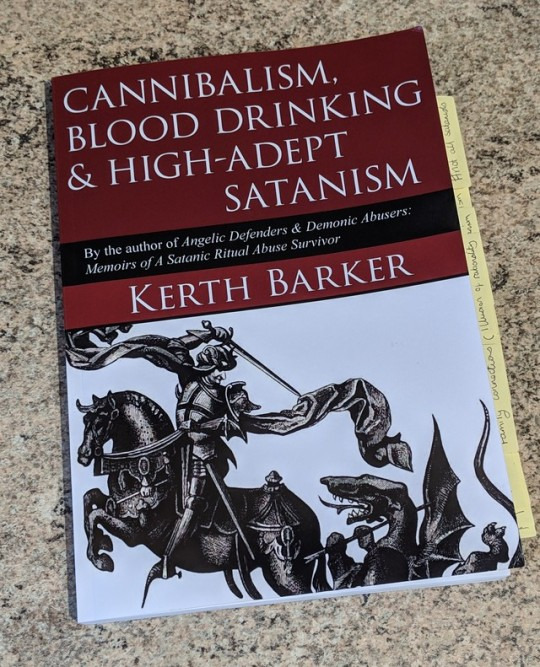
We read this book so that you don’t have to. Upon discovering Satanism, one thing you might do, is browse Amazon in search of reading material. If, like many of our readers, you’re money savvy and like to hunt for deals, you may be tempted to find the cheapest satanic books. DON’T. This was one of the first to come up on the list. At only £5 for a physical copy, it looks like a bargain. It is not. You will lose brain cells.
Please be aware that this book talks about child abuse, and so this review may be triggering for some.
Kerth Barker is a man who has written many fictional titles in which he depicts his own “Satanic abuse”, committed by various Satanists; most of which are apparently part of the illustrious Illuminati. They control everything in the world, want to see it destroyed, and yes, they all want to have sex with him. It is a classic example of Satanic Panic and is further proof that to this day, we still need to fight these unfathomable, despicable excuses of human beings who spread such codswallop. Spoiler alert. This guy (pictured below) is a con artist.

The Satanic Panic was born in the United States in the early 1980's. Evolving mainly from rumours of Satanic Ritual Abuse (commonly referred to as SRA). Allegations involved reports of physical and sexual abuse of people in the context of occult or Satanic rituals. By the late 1990's this epidemic of paranoia had spread to many parts of the world.
The first written account of SRA, which was a major trigger for Satanic Panic, was Lawrence Pazder’s 1980 book Michelle Remembers. Much like Kerth Barkers book, it was written in the form of an autobiography of Michelle Smith. Told by Smith and her husband to her Psychiatrist, Pazder himself. It is easy to see where Barker gained his inspiration. Michelle Remembers has now been completely discredited, but not before major uproar and accusations stemmed from it. Triggering what was essentially a mass witch hunt.
Mike Warnke is another example of how the Conservative Christian right added fuel to the fire. After appearing on ABC'c show 20/20 in an episode titled "The Devil Worshippers" Mike Warnke was frequently cited as an expert on the occult. After all he claimed to be an ex high ranking member of a Satanic organisation. He was debunked in 1991.
We bring up Warnke’s ‘The Satan Seller’, as it has the most in common with this month’s book. More importantly it's author Kerth Barker. The whole book reads like twisted fantasies of repressed sexuality and identity. And is dangerous in its accusations. He seems intent in ushering in a new age of Satanic Panic! In a failed attempt to seem like he isn’t trying to create unneeded panic, he states in his first chapter that he is not talking about all Satanists. He ‘acknowledges’ that there are some Satanists, who are not into cannibalism. It is almost like he is expecting there to be a #notallsatanists trend as we cry out in anger about how we are being misrepresented.

After a warning that adorns one of the first pages, it's plain to see that this was not going to be a light read. Amy (who regrettably suggested this book), read the whole thing in one sitting, fueled by pure hatred. With Lynsey and Cato getting through it almost as quick, they found it to be equally as excruciating. It left Cato wondering what dark secrets the author is really trying to hide, and Lynsey feeling as though it had taken all of her white blood cells, which where then shat on.

Going down the list of chapters, it becomes clear fairly early on that Barker is either insane, or he is taking the piss.
The first chapter starts off with Barkers need to announce that he is a Christian and that Satanists ruined his life. It escalates at a rapid pace from 0-100. Paedophilia, murder, cannibalism and ritualistic abuse, none of which are a laughing matter, spring out of nowhere. Barker, in all his inability to convey himself maturely sees it as an opportunity to put himself as the centre of an entirely fictional world. According to his book, from a young age he was a candidate, who was primed to become ‘one of the greats’.

The book is scattered with accounts of blood drinking, aliens, surgery and a resistance that communicates via discarded cigarette cartons and rubbish piles on the streets. Somehow Barker knows how to instantly interpret piles of garbage into something meaningful, which is more than we can say about his own work.
Barker often speaks of his enforced alter ego Kathy, and her special meetings. These ‘multiple personality disorders’ are still being used for fuel satanic panic today, and it is something that The Satanic Temple is working to fight against.
It is clear upon reading that this book is in fact less to do with actual satanism, and more to do with his lustful desires and need to be admired in a sinister sort of way. This comes in a range of forms, mostly being preyed on sexually, even talking of his own ejaculation and public sexual acts. Some of them are just laughable. At one point in the book, he tells of how the ‘Baron’ was walking up a set of stairs in front of him.

Barker sure does have a wild imagination. It is a shame the same can not be said for his choice in character names; the ‘Baron’ and ‘Dark Mother’ being the most excruciatingly cliché.
The deeper you get in, the more apparent it is this book is about spreading fear and attempting to force conservative christian opinions in disguise. One such example is Barkers take on the ‘Gay Agenda’.

This sort of damaging propaganda is not only inaccurate, but it is giving homophobes everywhere an excuse to stop the LGBTQ+ community having rights.
‘But where were his family?’ we hear you all ask. Conveniently all of Barkers close family are Christians, and only an older, lesser know family member was a Satanist. It begs the question, while he was being carted around by the ‘Baron’, what did his family think he was doing. There isn’t much talk of his actual family. He has been careful not to mention them too much or claim that they were in fact in on it, because that would be too easily debunked.
The worrying thing about all of this, is that there are so many people who believe the rubbish Barker has written. In fine-combing this book it is easy to see the tactics used by Barker to convince the reader. The most prevalent being the illusion of rationality. He states he believes in religious freedom, and that he isn’t trying to convert anyone.
The main tactic used in this book, is making the characters seem human. If you stand up in court and give a character assessment on someone whom you have spent a vast amount of time with, but only share with them the negatives, you may well fail in convincing the jury. It can make it seem like you are ‘trying to hard’. It doesn’t sound logical, but even Hitler was nice to people sometimes. By talking about some of the nice things that these so called ‘Satanic Abusers’ did for him, it makes his story seem more believable. Because surely if he was making up this whole entire story, he would make it all murder and horror. Wrong. He has added in these ‘niceties’ to make you think exactly that.
There are people out there, who genuinely go through sexual abuse as a child. There are victims and survivors of horrific crimes. This whole entire book is a kick in the face to the people who really have suffered.
Towards the end of the book, he goes all ‘David Icke’ on us and claims some of these high ranking Satanists are part of a reptilian race that are controlling us and taking over (I don’t suppose that has anything to do with the fact he is a fan and David Icke recommended his books). Also in case you weren’t aware, the moon is actually a hollow space station.
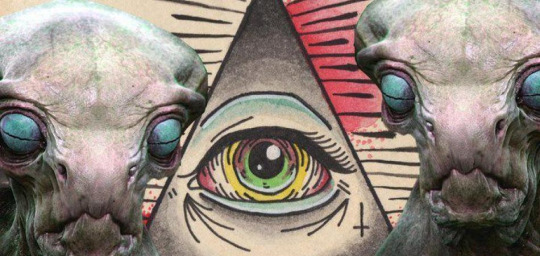
The biggest contradiction written throughout, it whether or not we are actually doomed. At one point he claims we aren’t far away from being completely ruled by these high-adept, alien Satanists. Only to then write a whole entire paragraph as to why they’re going to fail. It's almost as though he knows it isn’t going to happen because he made it all up, so he has to write a reason why it doesn’t come true.
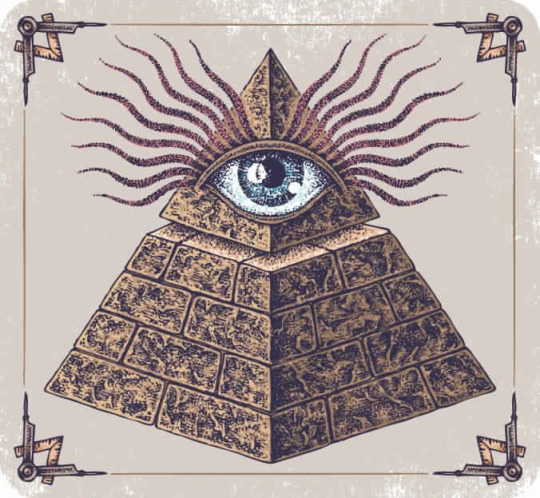
If these Satanists were ever nearly as powerful as claimed, and the stories true, he would have never been able to write this book. All the time he happens to just know everything about the destruction of the world as we know it and has access to books that nobody could ever possibly prove existed because after all… Illuminati.
He talks of the weakness of others and how he can help them overcome their blood addictions. But the entire time he is on his own high. A throne of disillusion.
To sum things up, ‘Cannibalism, Blood Drinking & High-Adept Satanism’ is one of the worst books we have ever had the malignant displeasure of reading. There is just too much wrong with to be able to cover it in one blog.
Again, we do not recommend you read this book. We read it so you don’t have to. But if you so wish, you can read part of it for free here or you can purchase it from Amazon here.
Ave Satanas!
This book was published by CreateSpace Independent Publishing Platform (16 Nov. 2014). It is copyrighted to the author, Kerth R Barker and we are not endorsed by him or anyone else to write this blog.
Kerth Barker image source
Blood drinking image source
Illuminati pyramid image source
Alien image source
#satanism#satanic#tst#the satanic temple#satanic panic#book#book review#debunk#terrible book#conspiracy#illuminati#the illuminati#new world order#david icke#cannibalism#blood#blood drinking#kerth barker#satan#books#library#satans library#reviews#the new world order#christians#satanic ritual abuse#sra#ritual abuse#abuse#child abuse
44 notes
·
View notes